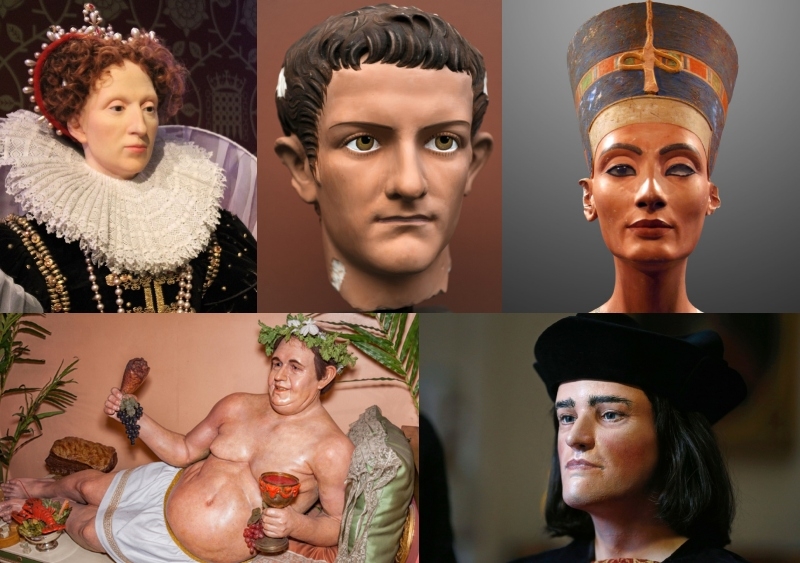
With this stunning technology, historians are now able to see just exactly how handsome Julius Caesar was! It also reveals that despite Bach’s beautiful music, he didn’t have a face as lovely as his compositions! Be prepared there are some good, some bad, and some that well… you might just want to cover your kids’ eyes. Time to take off that plaster mask and uncover some of history’s biggest mysteries!
Nefertiti
The bust of Nefertiti is probably the most represented and most copied of all of Ancient Egypt’s leaders. A symbol of feminine strength and leadership, her profile is worn proudly on the bodies of women to this very day. Reigning alongside her husband the Pharaoh Akhenaten until his death in 1336 B.C., there is overwhelming evidence that the Queen of Egypt ruled independently after he passed over into the afterlife.
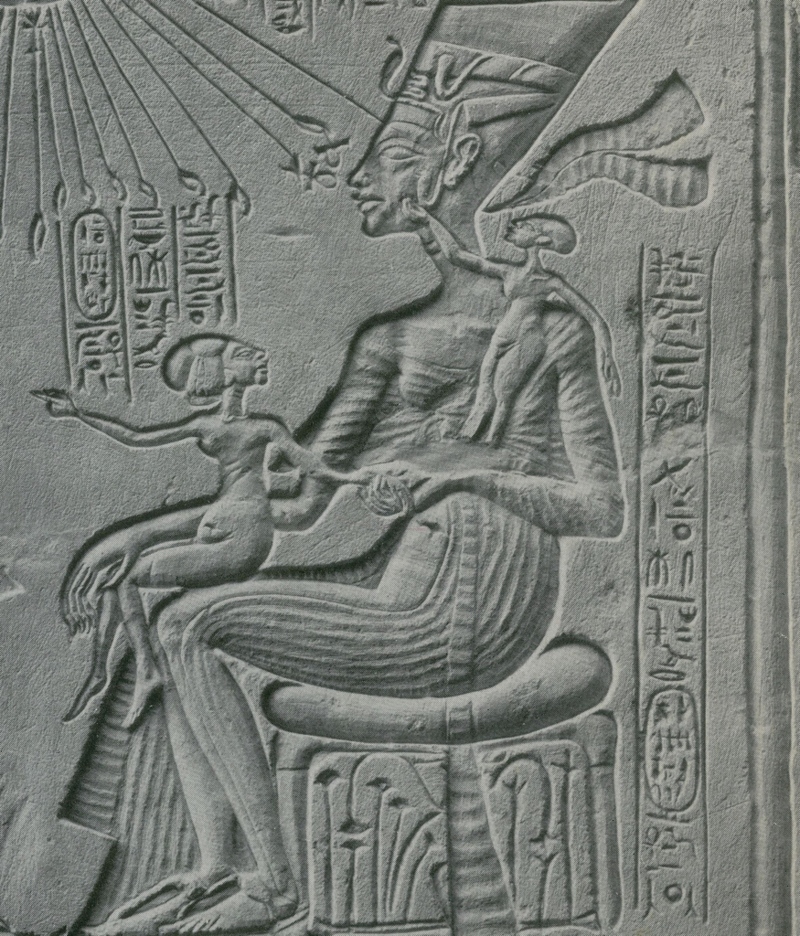
Like King Tutankhamun, Nefertiti became even more famous posthumously, after archaeologists discovered a statue of her. The bust was discovered by German archaeologist Ludwig Borchardt, in 1913. However, in 2009, researchers conducted a CT scan of the bust, revealing that underneath the beautiful representation, there was a completely different face shown!
What Lies Beneath
Hidden inside the stucco surface which had been decoratively painted with Nefertiti’s likeness, was a gem. Sculpted by the talented Thutmose, there was a separate bust of Nefertiti underneath the stucco exterior, except this was more special, being made of limestone. Following a series of CT scans and digital manipulations, the face of the renowned queen was unveiled.
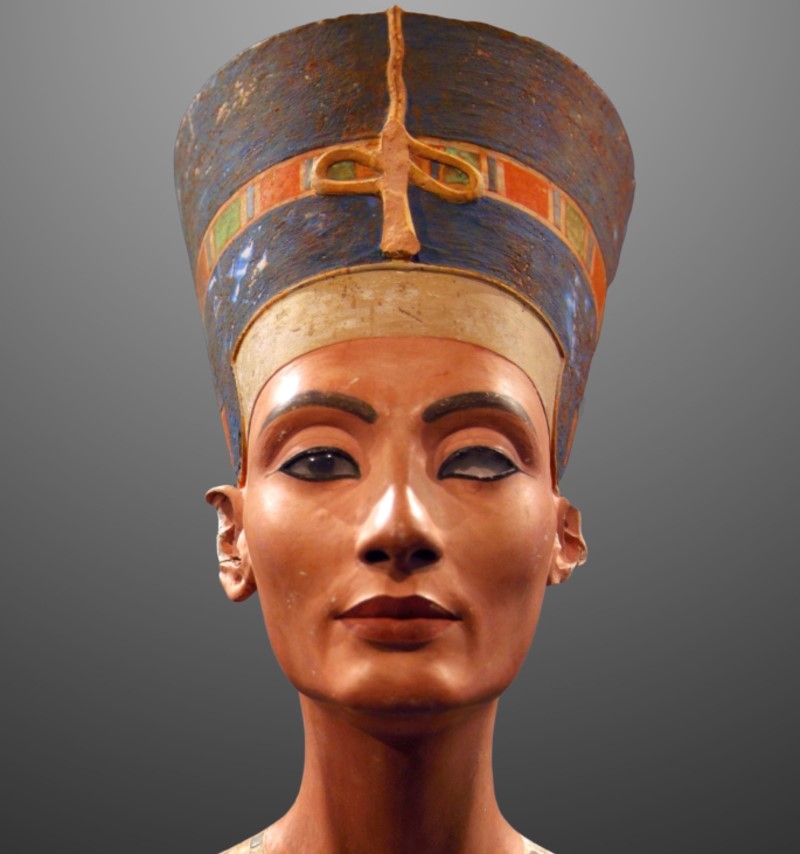
She was still just as beautiful as she had been painted and described, just with a couple more wrinkles and a slight bump in her strong Egyptian nose. But there was more to this amazing woman she mothered six children, with one of these going on to become the mother of King Tutankhamun. But we’re pretty disturbed at the ugly truth – King Tutankhamun’s father is none other than Akhenaten, Nefertiti’s HUSBAND!
President George Washington
Born George Washington in1732, little did he know that he would be one of the most famous American political leaders and military generals in history. A Founding Father, he served as the first President of the United States of America, holding office between 1789 and 1797. He led the Patriot forces to victory in the War of Independence and helped establish the federal government.

The Virginia-born former British soldier was the guiding hand that helped form the United States of America. This particular image was saved just in time by First Lady Dolley Madison in 1814 after the British burned down the President’s Palace. Lucky the First Lady saved it because really, it was what researchers were going off to reveal what Washington looked like back in the day!
The Face of a Founding Father
There’s nothing quite like stepping down at the height of your popularity eh? Unlike many who are booted that hang their heads in shame, Washington took his leave when people were begging him to stay on! He would’ve easily won a third term in the Oval Office, but decided to hang up his boots early.
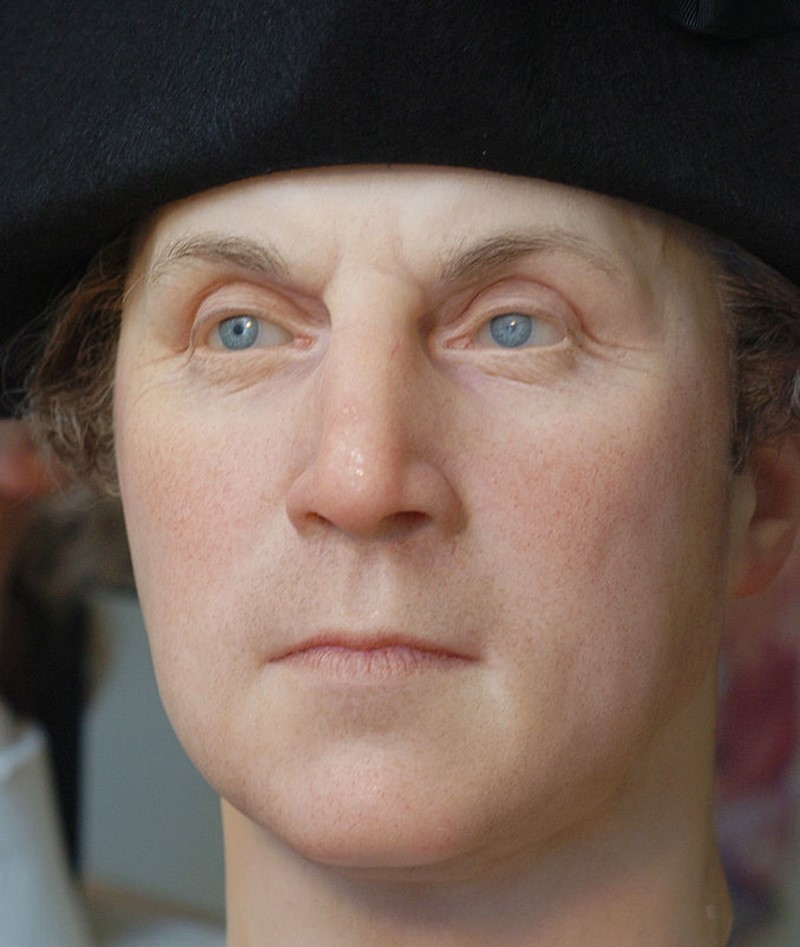
In doing so, he set a precedent of a two-term limit in office, which prevented the U.S. from being too easily controlled. The recreation you see here was created using #D design and meticulous waxwork by Studio Eis in Brooklyn, New York. The figure purportedly reveals the true likeness of the Founding Father’s face! Every detail is incredible, from George's fair skin to the wrinkles, not to mention the piercing blue eyes.
Good Queen Elizabeth
Reigning over England from 1558 to 1603, this woman is most famous for “doing a man’s job.” At the time, it was unheard of for women to be in positions of power, but it is argued that she did a better job than her predecessors! She was just 25 when she was crowned Queen of England, which is ironic considering her father’s best efforts to secure a male heir.
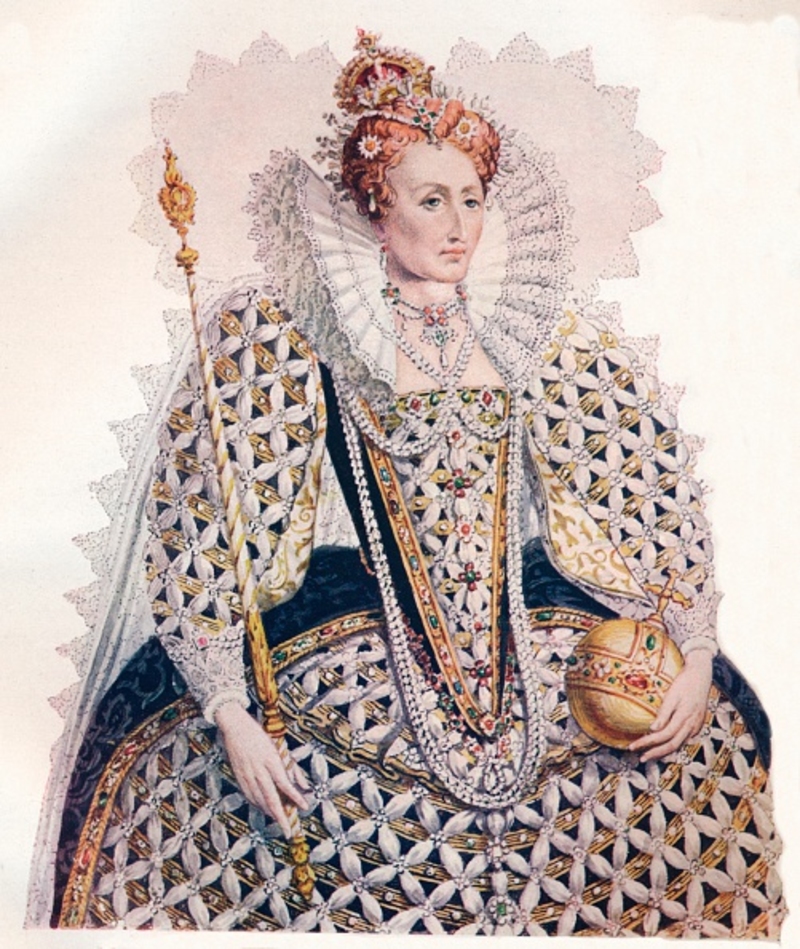
Her father had six wives to procure a son, however, it was meant to be for a woman to rise to the throne, as she took the reins after her siblings died. In her 45 year-long-reign, Elizabeth I never married! It is for that reason that she was given the title “The Virgin Queen.”
See Her Royal Majesty
It seems that England merely needed a woman’s touch to settle differences that plagued the country. Whilst she may have been excommunicated by the Catholic Church in 1570, she managed to settle rifts that had long preceded her! She was triumphant in her reign, defeating the Spanish Armada in 1588, and kept a watchful eye over the arts and literature.
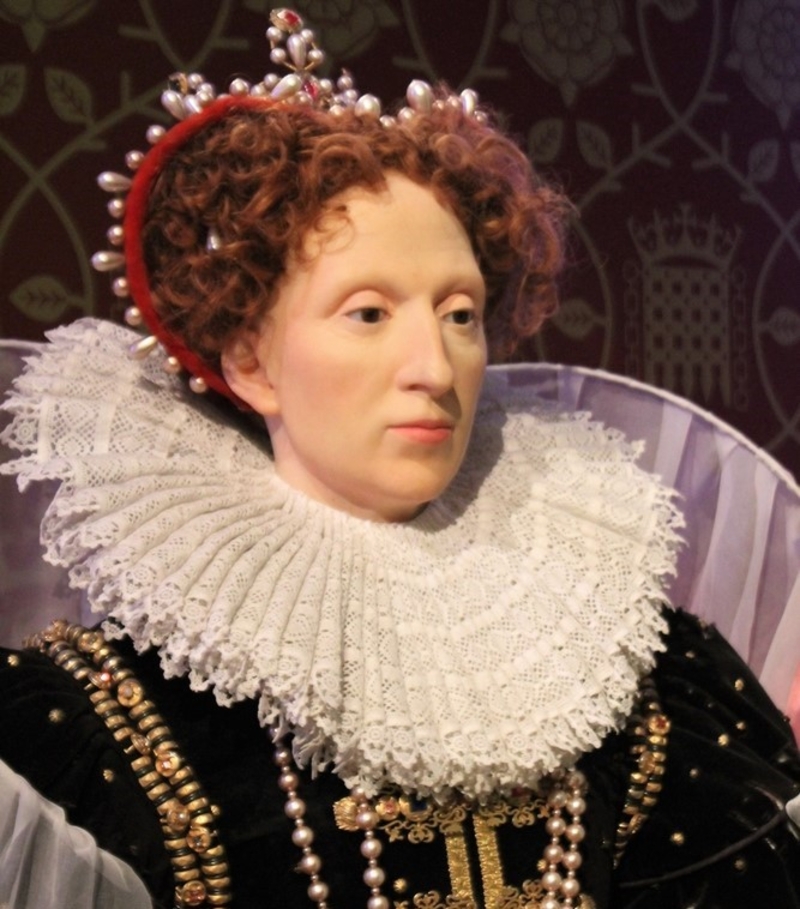
If you’ve seen Shakespeare in Love, you’ll see the short cameo at the end with Dame Judi Dench appearing as Queen Elizabeth I, attending a performance of Romeo + Juliet. You'll find this incredibly life-like wax replica of Queen Elizabeth I in the Museum of London. The depiction is so life-like that it's almost creepy if you ask us. Just look at the piercing expression!
King Tutankhamun: The Young Sun King
The ruler of Ancient Egypt between 1334 and 1324 BCE, King Tutankhamun is one of the most heavily documented and heavily investigated pharaohs of all time. The boy pharaoh ruled for a period of 10 years, from the alarmingly young age of just 9 years old. He passed away just before his 19th birthday. King “Tut” would’ve just been a relic if not for the discovery of his tomb in 1922.
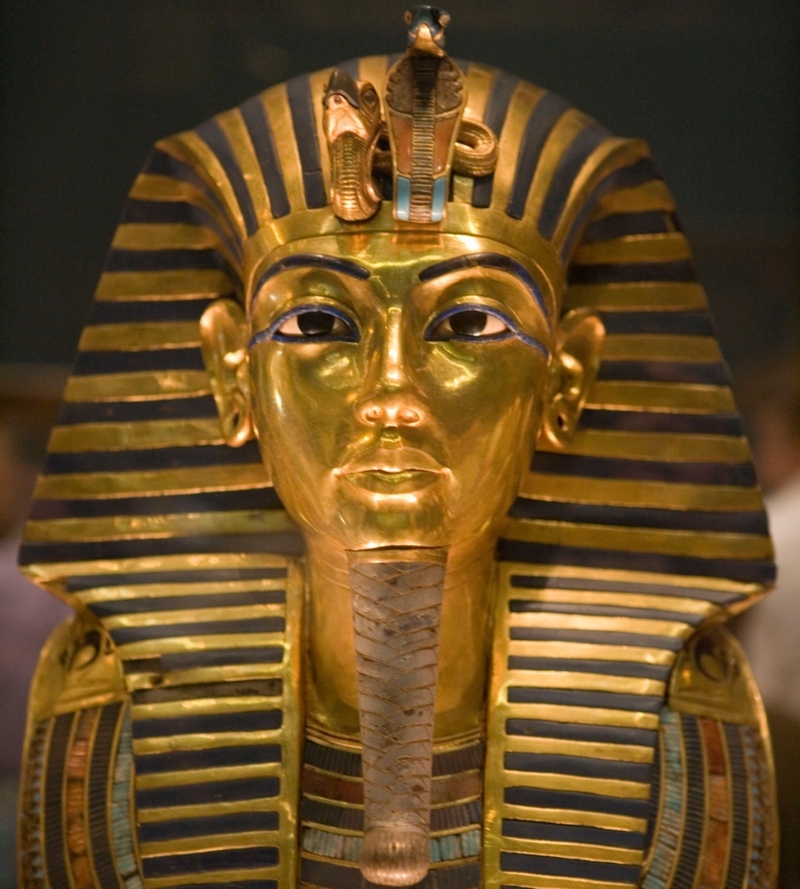
Howard Carter came across the incredible golden sarcophagus which contained the body of the young king. We now have an impression of what Tutankhamun would’ve looked like back in the day. Scientists and researchers conducted CT scans as well as completed over 2,000 digital scans. The results showed that Tutankhamun was less of a king and more a troubled product of inbreeding.
For King and Kingdom
Tutankhamen's reign was cut short, despite his youth. Ruling for just ten years, it was found the cause of death for the 19-year-old was in fact malaria. Not to mention the fact that he had a host of physical problems; a fractured lower leg, and congenital deformities. The royal family, like others before them, believed it was only proper to keep the bloodlines pure – by only breeding within the family.
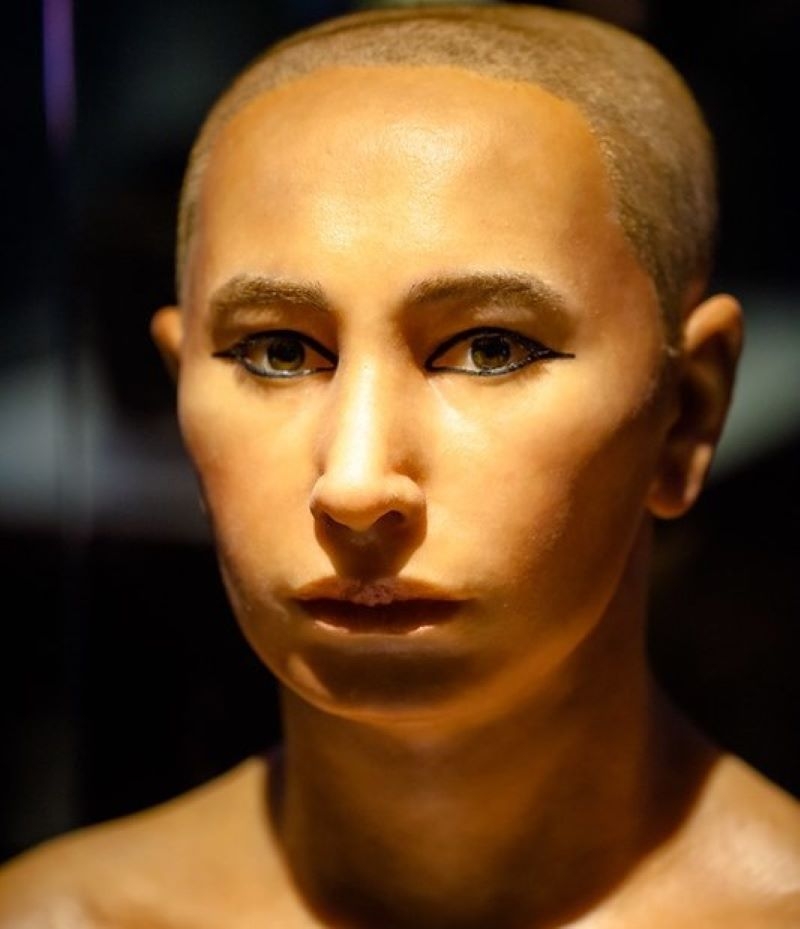
But Tutankhamun’s clubbed left foot is one example of how “keeping it in the family” could be detrimental to the strength of future pharaohs descended from this line. But this was just one of the issues that the young king suffered – following modern interpretations and models of Tutankhamun’s body, it seems that his hips formed improperly.
Mary, Queen of Scots
The only surviving, legitimate child of King James V of Scotland, Mary Stuart was just six DAYS old when she ascended to the throne. Scotland was largely ruled by regents whilst Mary was raised in France. She married at 16 and then following the Dauphin of France’s death, she returned to Scotland, in 1559. Professor Caroline Wilkinson of Dundee University was the co-instigator in re-creating Shakespeare’s face.
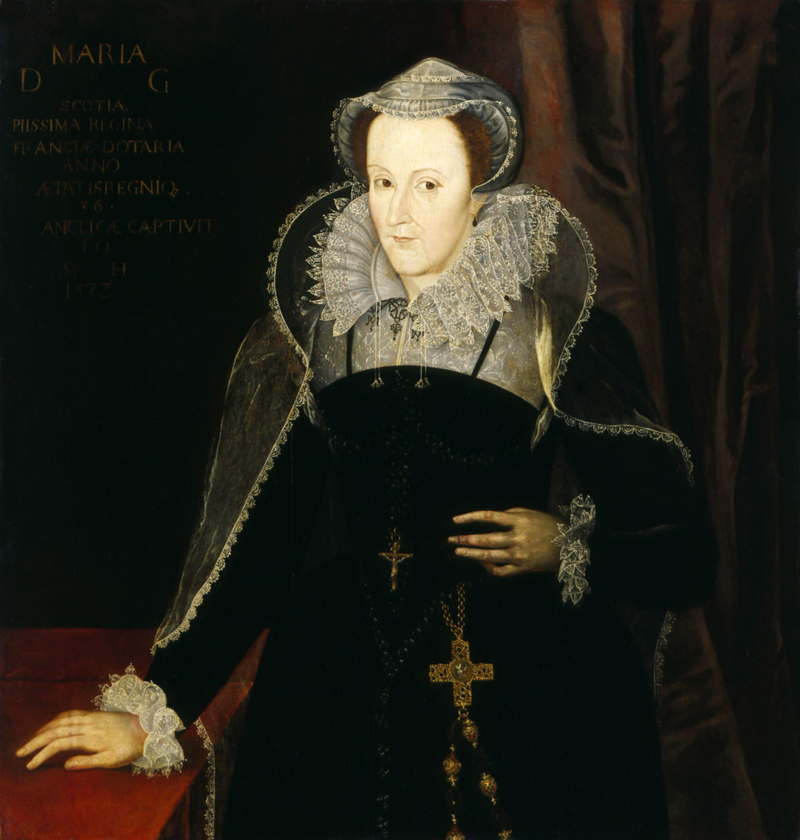
He is once again bringing those lost to history, back into the future. Using paintings and drawings of Mary, Queen of Scots was brought into the modern day with the help of modern tech! Wilkinson created the closest possible likeness for Mary, using biographical information to get past the stylized versions that are most commonly seen.
The Queen In All Her Glory
The Royals liked to keep things close – did you know Mary was cousins with Queen Elizabeth I? The two at first were like sisters, with Elizabeth accepting her cousin into England when the Scottish aristocratic class revolted and took away her ability to rule. But it seems that Mary got a taste for power and was entangled in a plot to overthrow her gracious cousin Elizabeth.
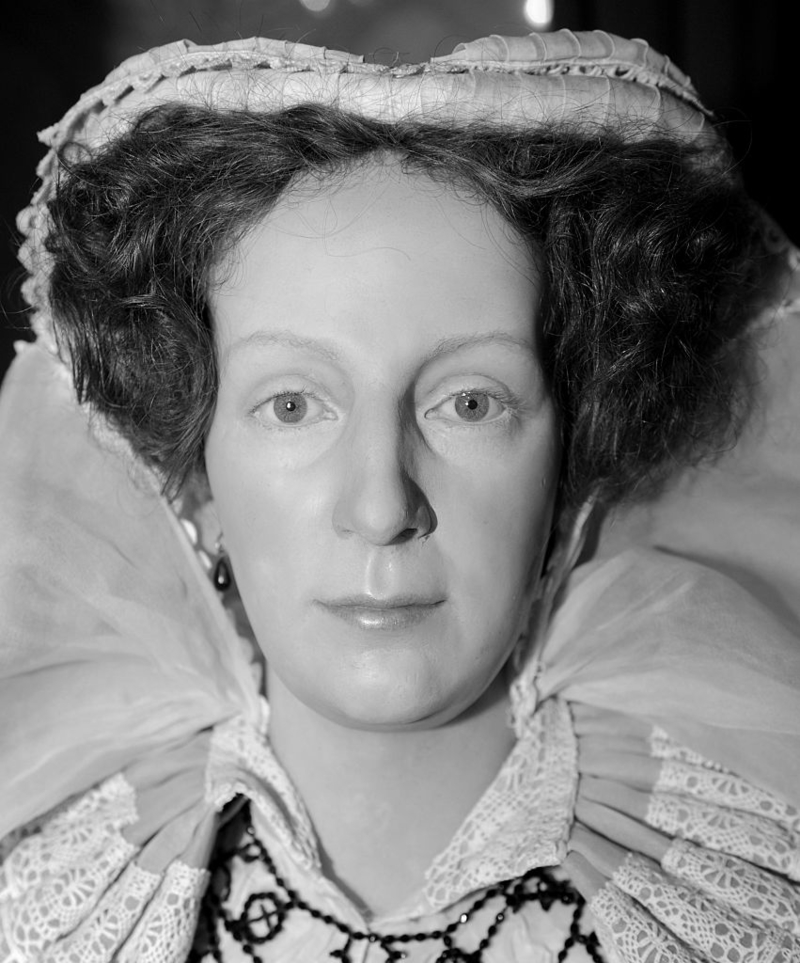
If anything, she’s lucky she wasn’t executed – but she did spend 19 years in prison, and of course, stripped of her royal title and claim to the throne. Elizabeth could be fooled once, but the second time around she wasn’t quite so forgiving. And “off with her head” became a real thing. The waxwork depiction shows Mary in her younger years.
Emperor Nero: Jack of All Trades, Master of Some
The Emperor of Rome between 54 and 64 A.D., Nero is infamously remembered for his madman antics – even to this day, few can touch the atrocities of this psychopathic Emperor! During his reign, he committed terrible atrocities, which of course took him out of favor with the Romans whom he ruled.
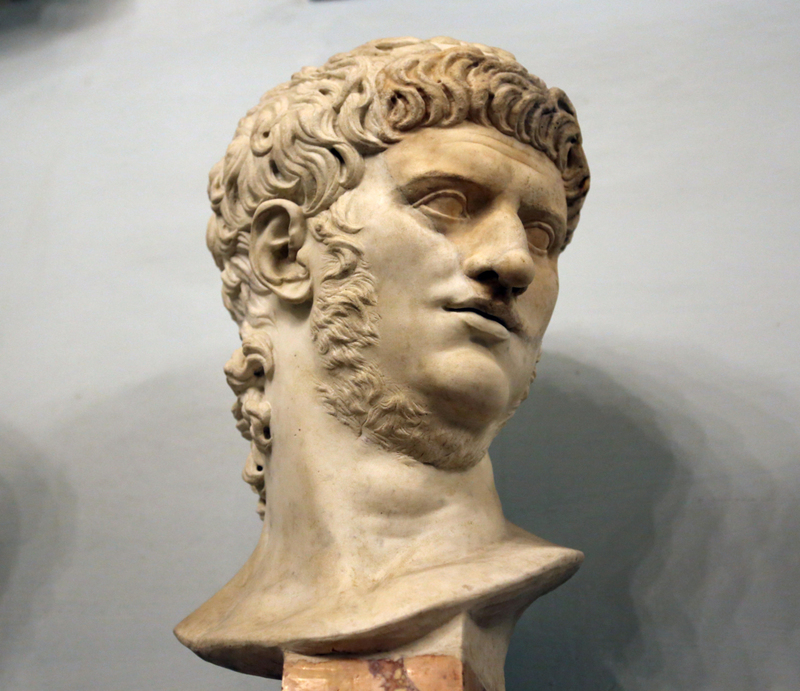
But whilst he was the most hated man in the Empire – and possibly the most hated of all the Emperors to preside over Rome, there are some stories which come to us today, speaking of a number of talents he possessed. An accomplished singer and musician, Nero played the lyre often. Not simply a man of the arts, Nero worked on his physical self and trained to become a finely-honed Olympian.
Nero Did a Bad Bad Thing
This recreation of Nero is spookily close to the writings describing the Emperor, we’re actually a little worried! With a fierce quality to his face, his steady gaze demonstrates this guy meant no nonsense! It was his way or the highway. Famous for his debaucheries, political murders, and persecution of Christians, he was, of course, the Emperor who watched Rome burn, and rebuilt it!
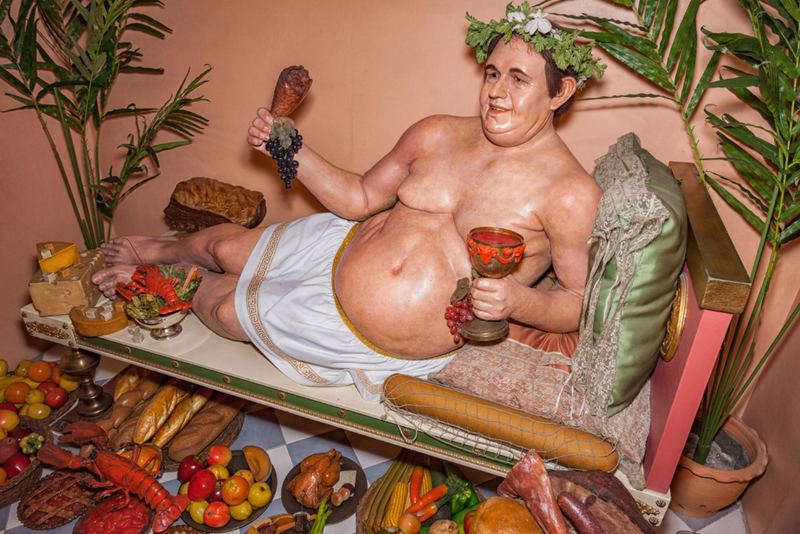
In 64 A.D. a terrible fire decimated the city. Do you think Nero cared? Well, apparently, he sang from the Greek epic “The Sack of Ilium” atop his palace roof. It’s rumored that the Emperor started the fire himself, to expand his palace complex! Eager to return Rome to its former glory, Nero sucked all the funds out of the Roman treasury. But it wouldn’t be complete without a 100-foot-tall bronze statue of himself, would it?
Robert I
Robert I, known more popularly as Robert the Bruce, is another whom historians and archaeologists have brought back to life by way of modern technology. Sure, Robert isn’t exactly looking as dapper as he ought to be as per the image below, but this cast was made from his actual skull, which was unearthed some 200 years ago when his burial site was being rebuilt!
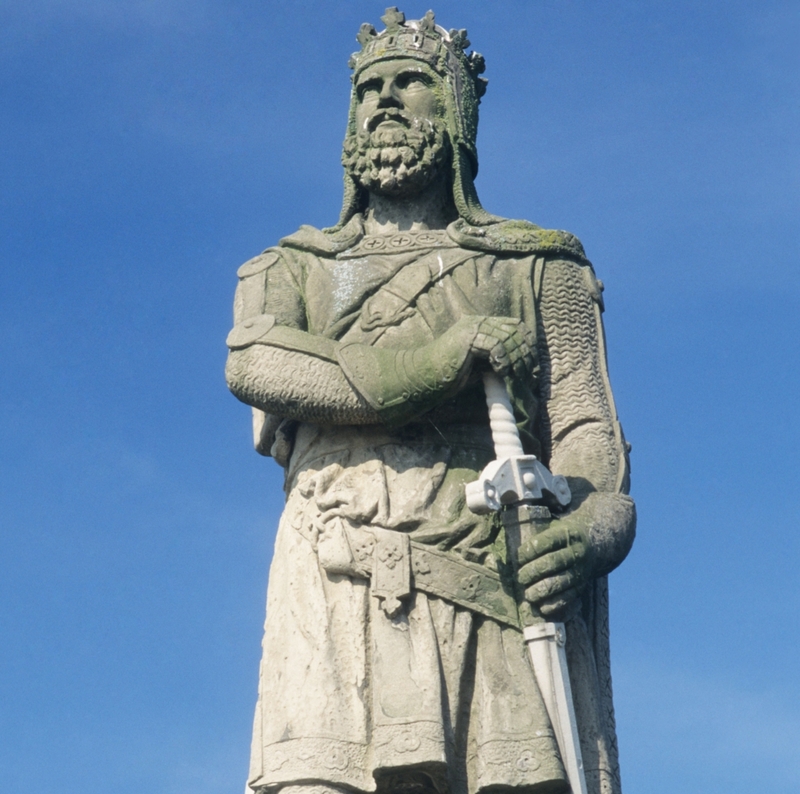
Taking the throne in 1306, Robert rose to be the King of Scots, until his death in 1329. In 1314, the mighty army of the Scots defeated an English army at Bannockburn, which allowed the Scots to continue living freely, outside of English rule. In late 2016, researchers from the University of Glasgow were curious to see if Face Lab specialists could reveal what he may have looked like!
Unveiling The Face Of A Natural Leader
The project, led by the University of Glasgow's Dr. Martin Macgregor, took two years to complete, following painstaking work and considerations from the teams involved. The cast, modeled on the discovered skull, enabled researchers to work out the exact structure of his face, from the muscles on his face even to eye color.
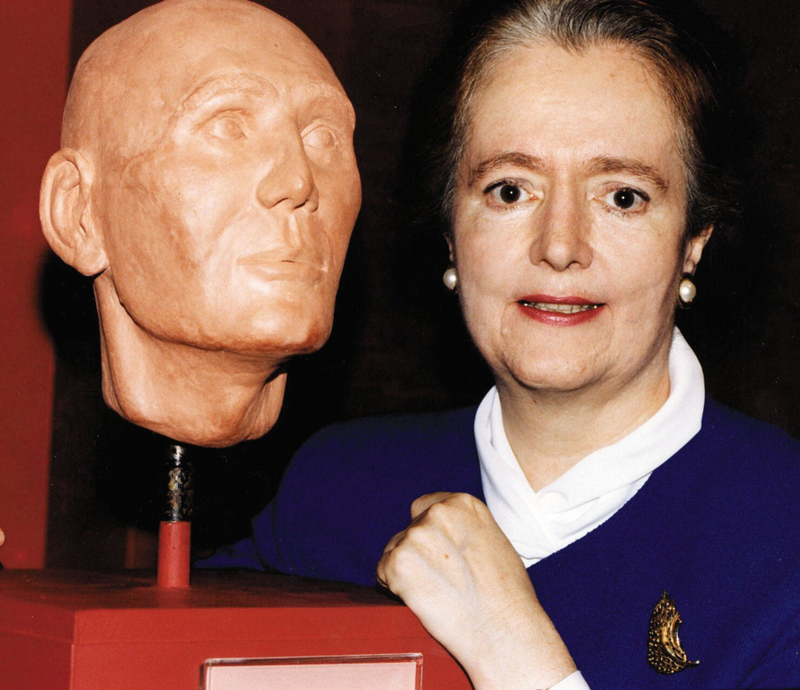
Okay, maybe not eye color – they had to have a bit of a guess at that! Evidence also suggests that at the time of Bruce’s death in 1329, he was possibly suffering from leprosy, which makes this model version somewhat redundant. But hey, at least it means the people of Scotland can put a face to a name!
Cleopatra
Reigning as co-regent over the Kingdom of Egypt for 30 years, this Egyptian minx was extremely intelligent and a polyglot. Of course, every story told of Cleopatra highlights her great beauty. The slight problem with this tale of Cleopatra is that there was a high possibility that she was not perhaps as beautiful as it was originally imagined.
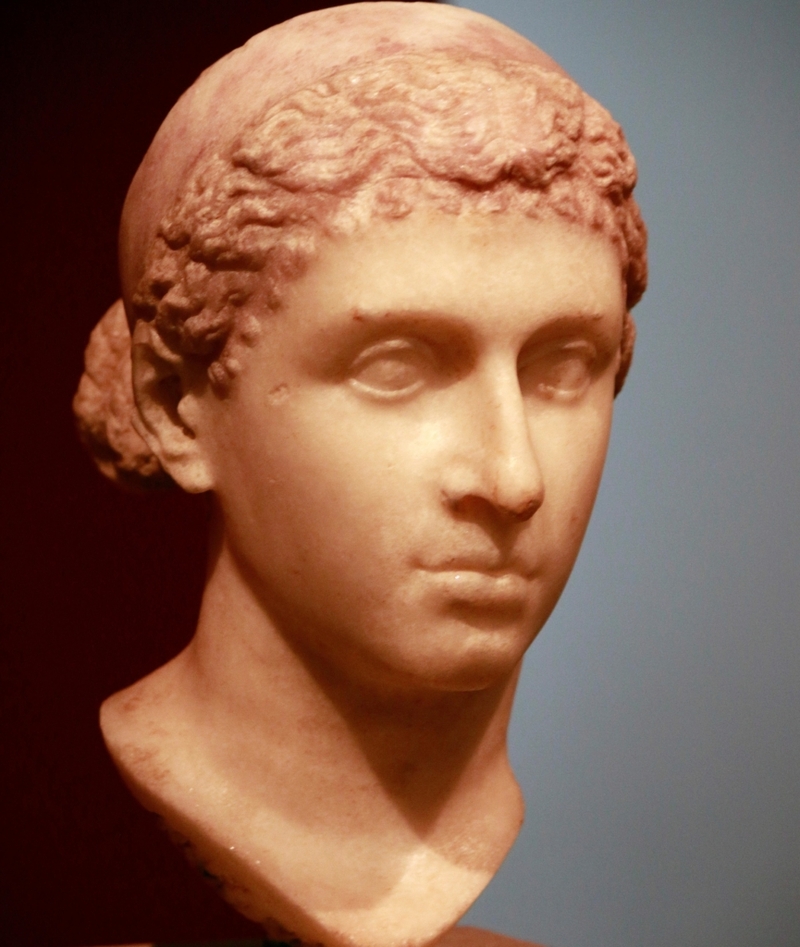
Some busts of this leading lady portray a stunning creature unlike any other woman before her, which is in stark contrast to their more modest counterparts, such as those housed in the Altes Museum in Berlin. Despite bewitching two of the ancient world’s most influential leaders, it seems that it was Cleopatra’s brains that made her so intoxicating. So it seems that the modest depiction is truer to reality than the tale of her possessing a wondrous beauty.
Maybe She Was Born With It, Maybe It’s History!
The marble bust of Cleopatra, created between 40 and 30 B.C. is believed to be the most accurate representation of the fabled woman. Cross-examining artwork with the bust reveals the same hairstyle and similar features, however, this could be just an example of how women were depicted during the time.
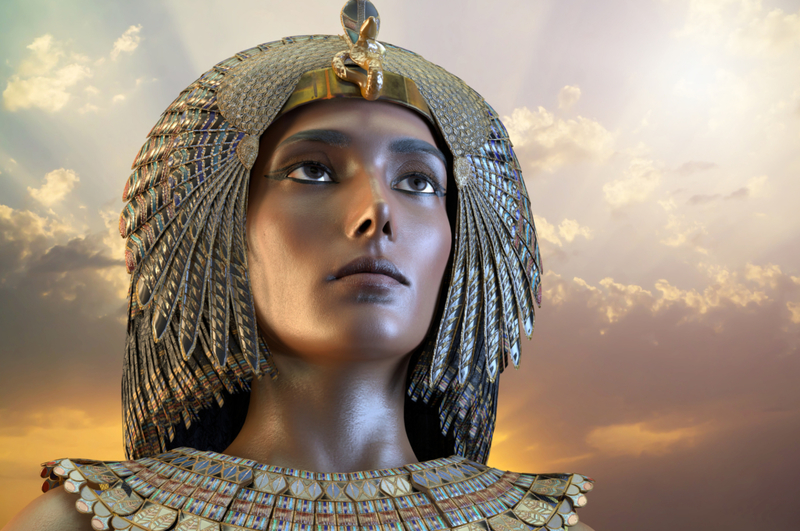
She sported the “melon hairstyle” which was typical of Ptolemaic queens – as shown on coins and artworks which were dedicated to Cleopatra herself. This 3-D rendered version of the Egyptian queen gives us a fresh perspective on how she may have looked at the time. What we know for certain is that Cleopatra was rich in wealth, beauty, and intelligence.
Julius Caesar
The most famous of the Caesars to rule Rome, Julius Caesar rose to prominence in ancient Rome due to his military prowess, expanding Rome’s territories far and wide, so that it became the largest empire in the known world. Successful campaigns were waged in all directions, winning him battles across the European continent.
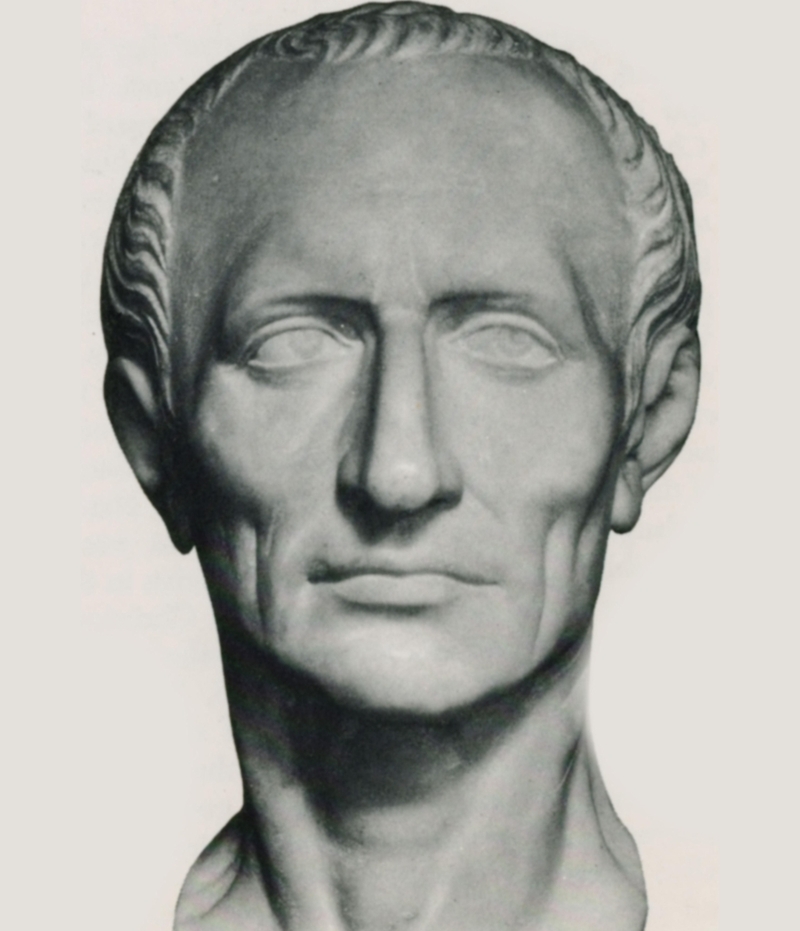
In 60 B.C. he formed the First Triumvirate through diplomacy (well, alongside quite a bit of bloodshed and persuasion with his armies), with fellow prominent Romans, including Crassus. In 50 B.C., Triumvirate member Crassus was killed during the battle, which led to a catastrophic battle between the two remaining members. The bust pictured above was scanned by archaeologists and anthropologists Maja d’Hollosy just last year, in order to get closer to forming a proper image of what Caesar may have looked like, all those years ago!
All Hail Caesar!
Whilst Pompey may have indeed been aligned with the powerful Senate, Caesar managed to control the Roman empire singlehandedly, following the victory at the Battle of Pharsalus in 48 B.C. Caesar, despite being in a weak position with only 22,000 men and startlingly low provisions, managed to earn a victory. It seems that Pompey was spurred on by senators, but played his hand too quickly, which led to their defeat.
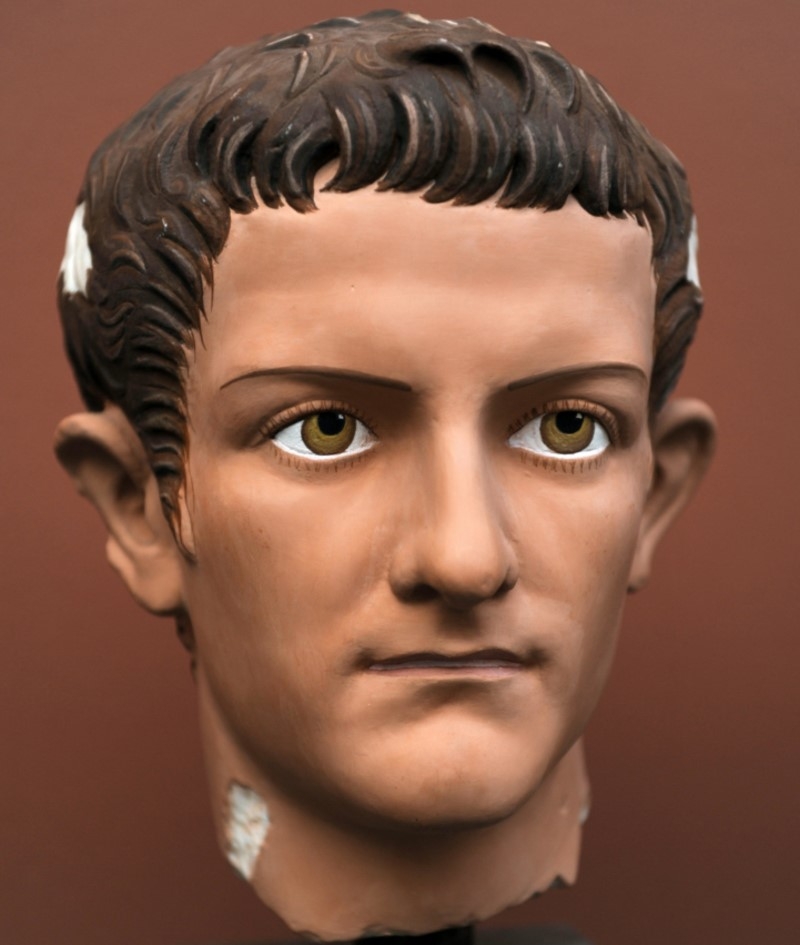
The bust of Julius Caesar which is housed in the Rijksmuseum van Oudheden in Amsterdam in the Netherlands was used conjointly to create the reconstruction you see above, which reveals the face of this great Roman Emperor. With a large head and forehead, his face seems almost disproportionate! You can pop over to the Glyptoteket Art Museum in Copenhagen, Denmark for your selfie.
William Shakespeare: Playwright, Philosopher, Pretty Face?
Arguably the most famous and prolific playwright in history, his writing spanned a number of years, before his life was cut relatively short, passing away in 1616. England’s national poet coined a number of famous terms and expressions which we still use today, like: “night owl”, “full circle” and lines like “all that glitters is not gold.” Well said, Shakespeare! The man behind Romeo and Juliet, Hamlet, Macbeth, Julius Caesar, A Midsummer Night’s Dream and so, so many others, it’s likely you would’ve studied his works at some point in high school!
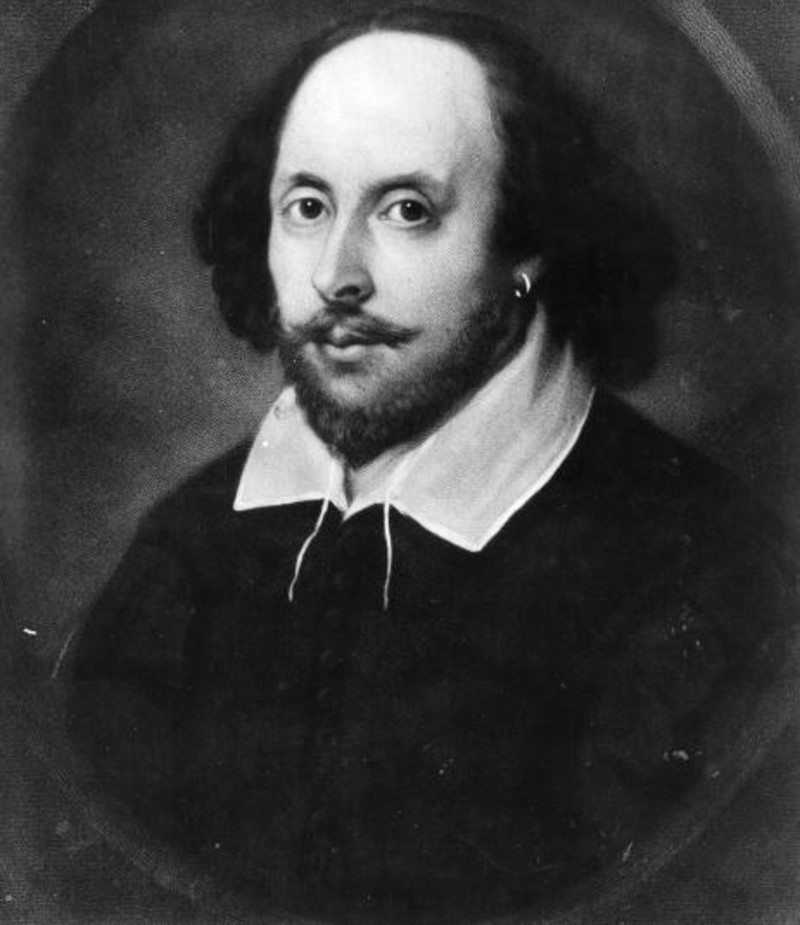
The drawing you see above is the most commonly seen illustration of Shakespeare, but this didn’t satisfy Shakespearean enthusiasts! This particular engraving/etching was completed by the Scotsman James Faed in 1853, which shows Shakespeare surrounded by his plethora of works!
(We) Look Not With the Eyes, But With the Mind
The man who put the Globe theatre on the map and really, lifted the English language and was responsible for its development, Shakespeare stunningly was the son of an English farmer! A man with a way with words unlike any other, his legacy is astounding. But many wanted to create his likeness with modern technology.
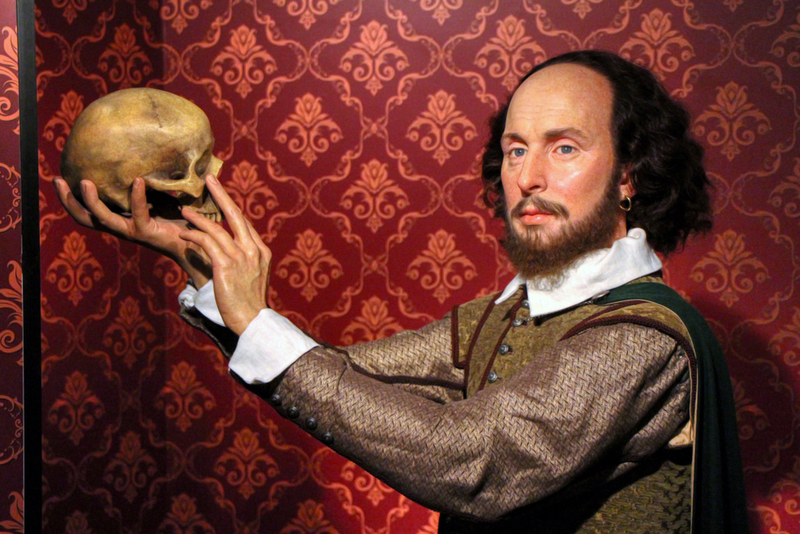
So it was decided to use Shakespeare’s death mask to create the image of what he really looked like! We have to say, we are really impressed with this wax reconstruction of the famous playwright's face. It's so realistic that we can almost see him thinking of some of the greatest pieces of literature of our time.
Richard III: King of England, Lord of Ireland
The last Yorkist king of England, Richard III was King of England for just two years. Poor Richard was always portrayed as a tyrant, particularly if you read Shakespeare’s play of the same name. His death during the Wars of the Roses marked a significant turning point in English history; the end of the Plantagenet dynasty and the beginning of the Tudor age.
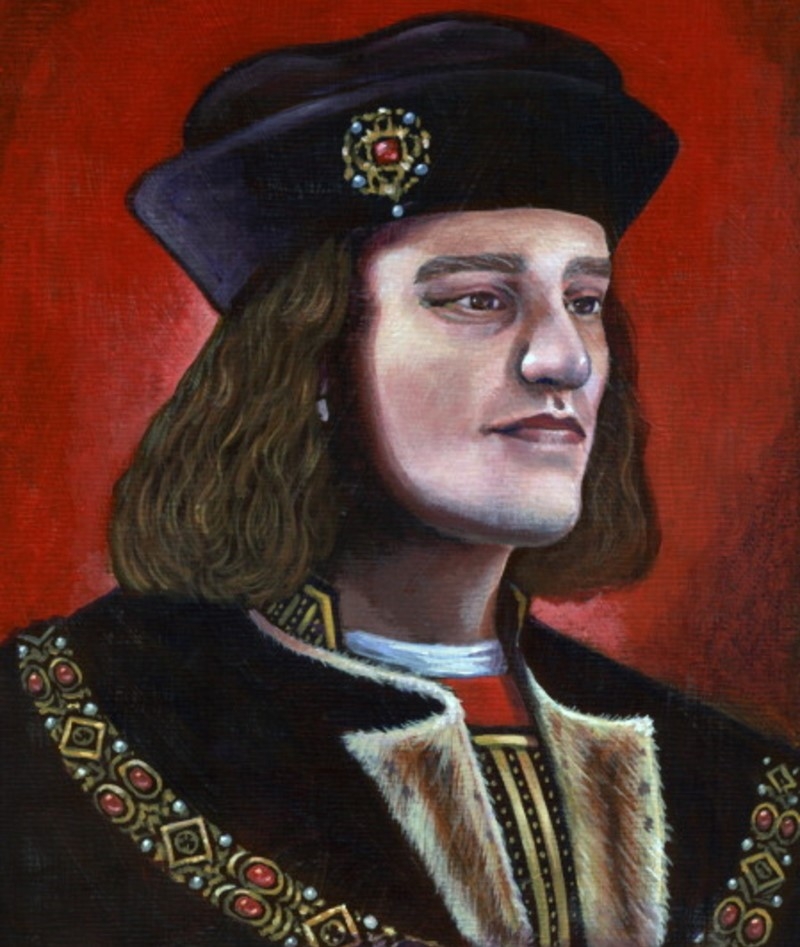
For a man who lived back in the 1450s, it would’ve seemed pretty impossible to even imagine trying to craft an image of Richard III. Shortly after his death, his burial site was seemingly lost to history. But researchers believed they could find him – following clues which led them to an underground parking lot, imagine their shock when they found his remains underneath!
Richard III: The Man Himself
Following the discovery beneath the Leicester car park in 2012, it led to a massive increase in curiosity about the former King of England. At the Battle of Bosworth Field, Richard III’s place of death, the King rather stupidly led a charge right into the thick of the Tudors' army.
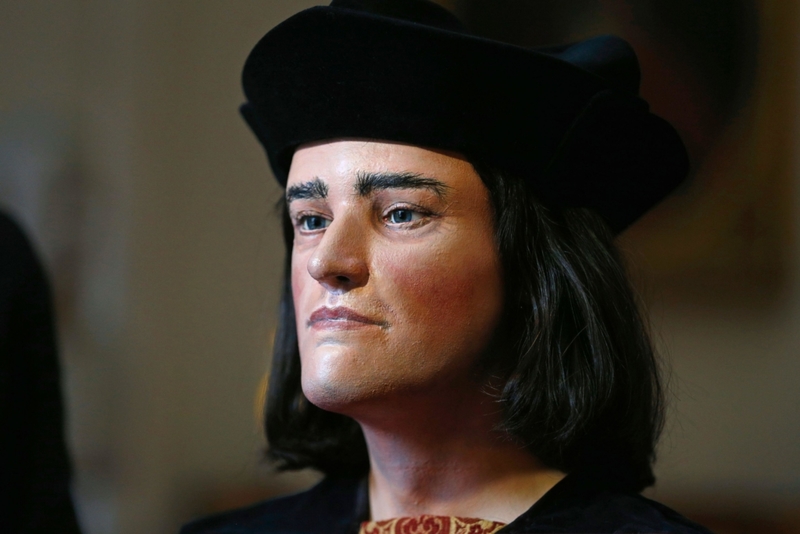
A dedicated team of reconstructionists helped to bring King Richard III into the modern world! Researchers were not guided by the usual host of paintings and drawings this time around, relying on the historical record and posthumously created paintings. The missing piece, however, was the skull of the king – and who would’ve thought it would be hiding under a parking lot!
Jesus Christ – Superstar?
Researchers recreated the face of one of the most famous men ever. It’s estimated that Jesus Christ was born around 4 B.C. and died quite young, around 30 – 33 A.D. For those curious people, A.D., in fact, stands for “Anno Domini” or “The Year of Our Lord.” The “Son of God" was (and still is) kind of a big deal.

Jesus Christ is perhaps the most drawn or sketched figure in history. The images you see of this face are among the most commonly found in the world. Basically, he’s very well known. Interestingly though, the painting above, which was discovered during the Middle Ages, reveals a white man with fair hair. Unlikely that the Easterners would’ve created this image! So what Jesus looked like might surprise some people.
The Shroud of Turin: A Reliable Source?
For years, the mystery of the Shroud of Turin has conjured up a lot of interest and intrigue. Believed to be the burial cloth of Jesus of Nazareth, it is currently safeguarded within the Cathedral of Saint John the Baptist in Turin, Italy. Discovered in 1354, the 14-foot linen cloth had the image of the Crucifixion with a body depicted on the fabric.
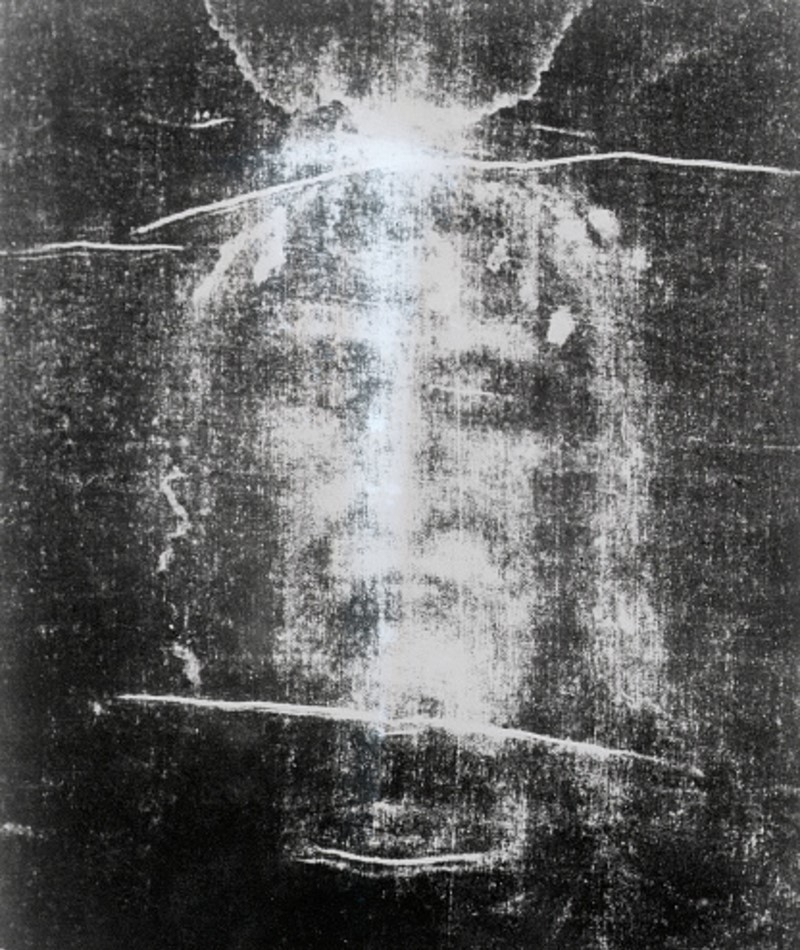
It seems that the Shroud verified the Scripture, with blood on the Shroud where his wounds were told to have been. But how can anyone prove that the Shroud did indeed belong to Jesus Christ? It is a difficult one to adjudicate, even for the most well-read and well-researched historians! In 2001, the above image, created by forensic anthropologist Richard Neave, was thought to help to settle the debate.
Meritamen, Beloved of Amun
The daughter and later Great Royal Wife of Pharaoh Ramesses the Great, next up on our list is Meritamen. When her mother, Ramesses’ favorite wife, Nefertari died, Meritamen took her place. Fast forward, and the skull of the “beloved of the god Amun” was discovered in the archives in a peculiar place: none other than at the University of Melbourne!
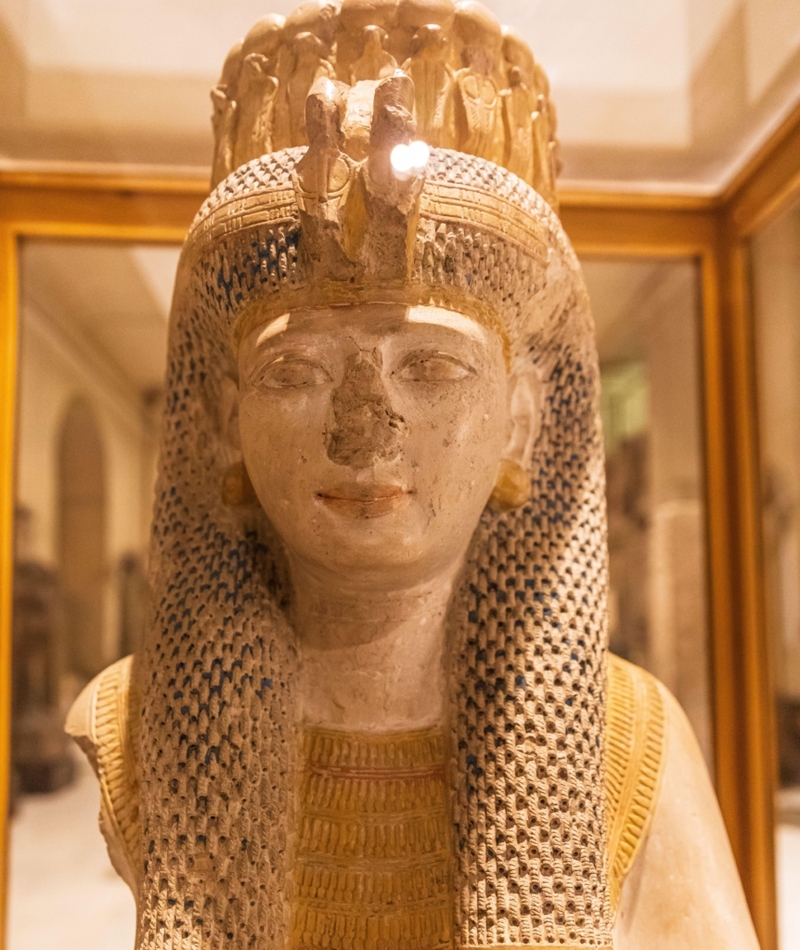
Now that would’ve made some university researcher’s day! Or year! No one seems to know how her skull managed to get on a flight to Australia. The mysterious Meritamen was a noblewoman, and it was determined that the skull was over 3,000 years old. At the time of her death, it seems she was relatively young – researchers estimate she was between 18 and 25 at the time.
Putting Meritamen Back Together
It’s funny the things you find out when you examine a skull – not that we’d have any experience. It seems that the young queen had a case of tooth decay! This then matched up with the researcher’s guesses that she was born during the time of Alexander the Great, as he was the one to bring sugar to Egypt during his series of conquests.
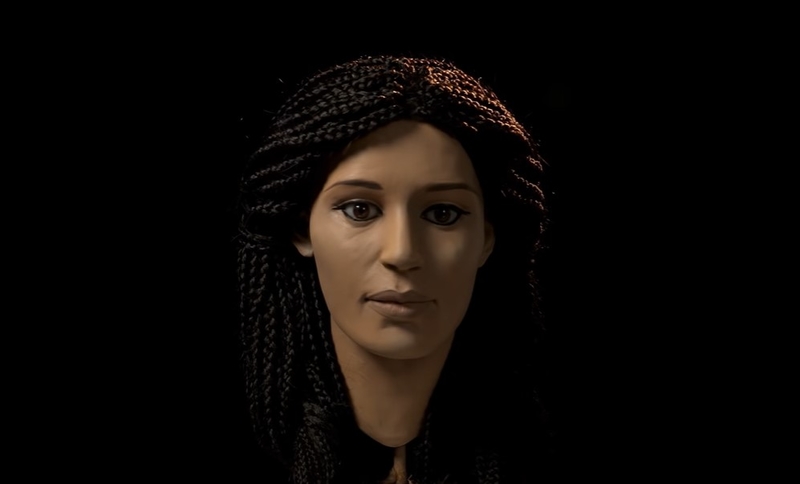
140 hours and more were required from researchers who conducted the CT scans. Using a 3-D printer, the above figure of Meritamen was constructed. According to researchers, and by analyzing her bone structure, Meritamen was quite the looker! It was also discovered that she suffered from anemia, which was potentially related to her death, as it would’ve caused her to be weak and lethargic. Poor thing, can’t imagine it was fun with her living situation.
Saint Anthony
Saint Anthony of Padua, known as Saint Anthony of Lisbon, was a Portuguese Catholic priest, and friar of the Franciscan Order of monks. Raised by a wealthy family in Lisbon, Portugal, he turned to a simpler life which was devoted to the service of the Lord! His contemporaries noted his powerful preaching, expert knowledge of the scriptures, as well as his undying devotion to the poor and sick.

Much beloved by the Catholic Church, his legacy carried on to this day, despite him passing away at the young age of thirty-six! For a man who’s purportedly the saint for lost things, wouldn’t you want to have a face to imagine so you know who to direct your prayers?
Behold… The Face of a Saint!
Tales surrounding Anthony of Padua’s death are quite peculiar, and perhaps a little larger than life. He died in 1231, and it’s rumored that bells rang of their own accord, and children began crying spontaneously in the street. If that’s true, well, cool story bro, but if it isn’t, we’re not too shocked about that either! In a creepy twist, his body was exhumed three decades later. The exhumers found that all that was remaining of the saint was his bottom jawbone and tongue.
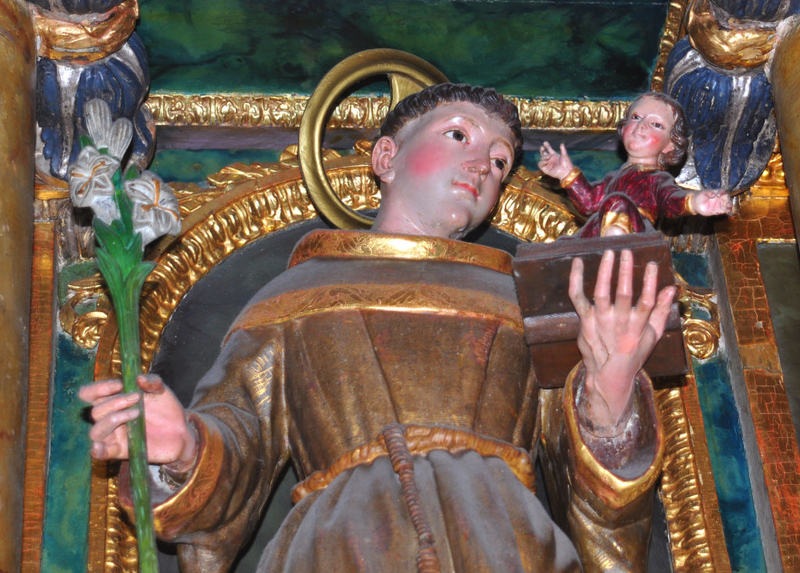
If you’re already feeling a little queasy, you probably don’t want to know that you can visit them because they’re on display! You can take a trip to Mission Dolores, one of the oldest churches in San Francisco, California to lay your eyes on a life-size depiction of Saint Anthony that dates all the way back to the 18th century.
El Señor de Sipán
The Lord of Sipán was the first of several Moche mummies discovered at Huaca Rajada in Peru. A fairly recent discovery, the mummies were found in 1987! Archaeologists deem this site one of the most significant in the twentieth century, particularly because the Lord of Sipán’s tomb was found intact and left untouched by thieves! After careful excavation, fourteen tombs had been located and identified in the area.

It seems that the ancient Peruvians also believed in the afterlife and burial procedures – as such, Sipán was found buried with a treasure trove! Now this was a delicate procedure for the forensic team as the pressure from the sediment that had been lying dormant for over 2,000 years dropped, and consequently shattered the skull into 96 pieces! Thankfully the team was able to put it all back together.
The Lord of Sipán: Put Back Together
This life-like reconstruction of the Lord of Sipan forms part of an exhibit at the Royal Tombs of Sipan Museum, Peru. Researchers believe the man was 35-45 years of age when he died, and was not just a common man. It makes sense with all the treasure he was buried with! But it wasn’t just the treasure – this man was wearing incredibly ornate jewelry, imbued with precious stones and set in rare metal.
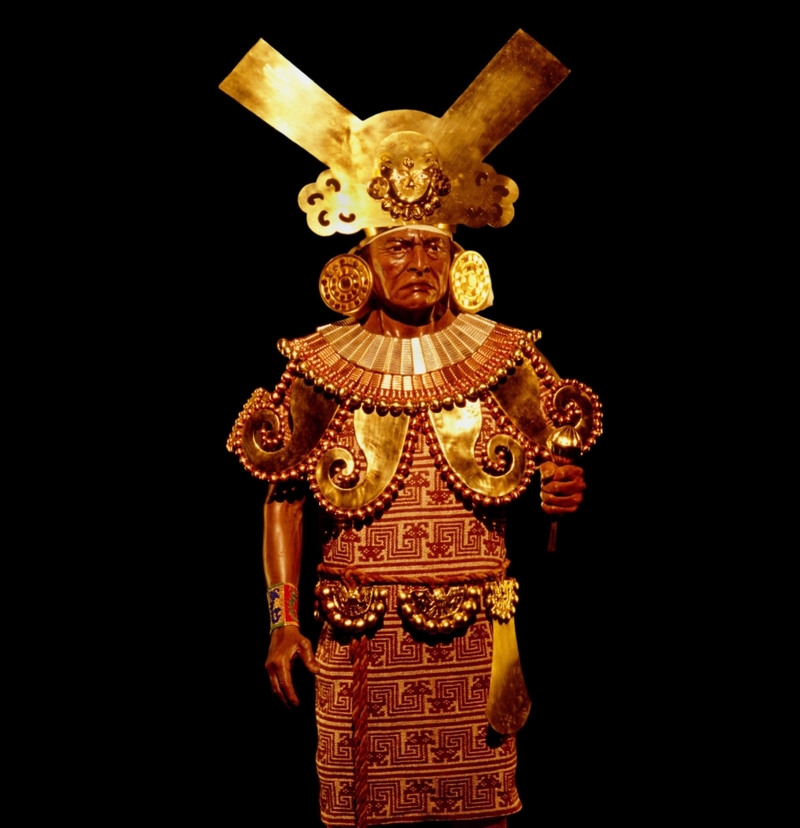
He was also buried with two warriors. Bodyguards for the afterlife? The creepier part is the fact that their feet were amputated... please let’s hope they weren’t buried alive with their feet cut off so they couldn’t leave!! Gruesome stuff.
King Henry IV
At the age of 19, Henry IV became the King of Navarre, before being swiftly married just two months later! At the time, there was a religious war between the Catholics and the Protestants. Henry IV was the only French king to ever follow the Protestant faith! But the fighting was absurd – for the event of Henry IV’s wedding, thousands of Protestants came to Paris to enjoy the celebrations and spectacle, but this was to end catastrophically.

What is remembered as the St. Bartholomew’s Day Massacre, took place on the very day of his wedding, with the same Protestants being killed by Catholic fanatics. Henry barely escaped with his life. After five years he escaped, and raised an army to fight in the “Wars of Religion.” In 1589, he marched right into Paris. His counterpart Henry III was assassinated, and he became the King of France.
The Good King Henry
After waging his religious war, he followed through with his promises to the Protestant French, persecuting Catholic French people across the nation. He was made a popular target for assassination attempts, allegedly dodging twelve attempts on his life! “Le Bon Roi Henri” was remembered for his concern for the welfare of his people, and for being a King who worked to protect the interests of the state, promote agriculture, eliminate corruption and encouraging education.
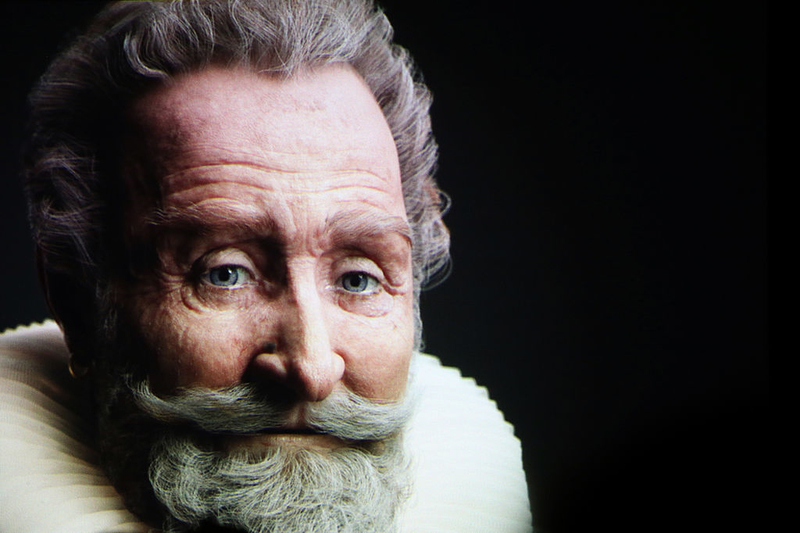
Due to his tolerance, he was an unpopular king among his contemporaries, though did gain more status after his death. For this reason, researchers chose to recreate his face using modern technology. The same team which worked on bringing Robespierre back to life, including forensic pathologist Philippe Charlier and facial reconstruction specialist Philippe Froesch, also worked on showing the modern world the face of the “Good King.”
Maximilien de Robespierre: The Accomplished
Despite a short reign as head of state of France during the late 1700s, Maximilien de Robespierre is one of the best known and most influential figures, due to his association with the French Revolution. An accomplished lawyer and politician, he was an outspoken advocate for the right to petition. He campaigned for the abolition of both celibacy AND slavery in the French colonies.
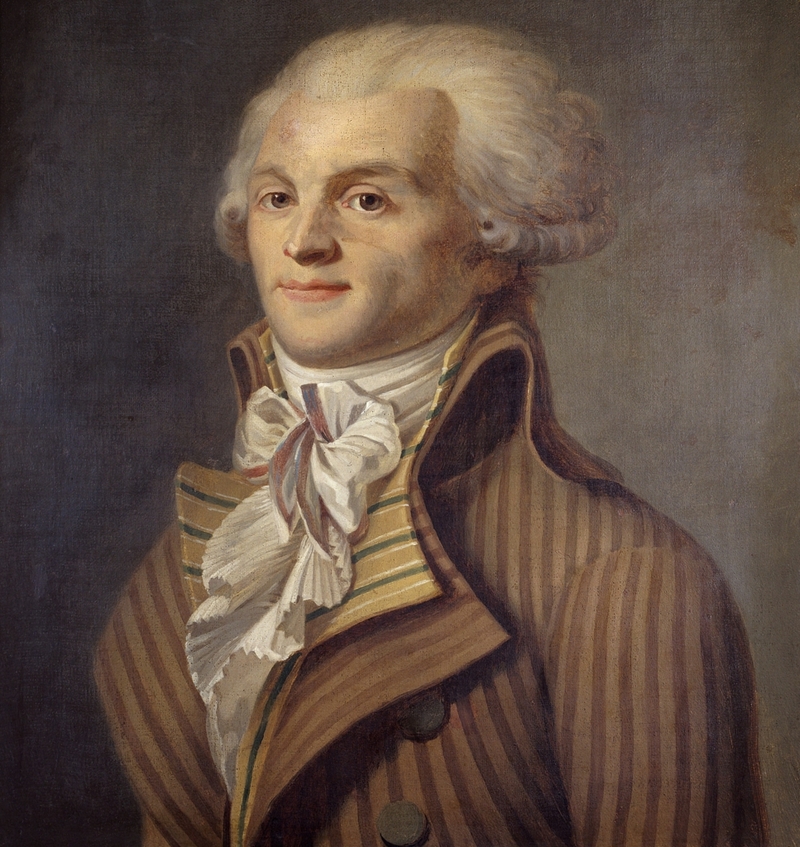
He helped establish the feared Committee for Public Safety after King Louis XVI and his cake-enthusiast wife Queen Marie Antoinette was executed by the famous guillotine! A brutal regime, Robespierre was behind who was, and who wasn’t executed – by the same method as the former King and Queen – yeah, the guillotine. It was also a time of great religious persecution – he tried to make the French national religion “The Cult of the Supreme Being.”
Just The Tip of The Robespierre?
Clearly, the myth behind the man was so great that it intrigued forensic pathologist Philippe Charlier, and led him to join forces with facial reconstruction specialist Philippe Froesch to re-create the face of the mad French statesman. The pair used his actual death mask to help to construct the image that we see today. Now Robespierre’s actual responsibility for what occurred in France during that pivotal time is a hotly debated topic among historians.
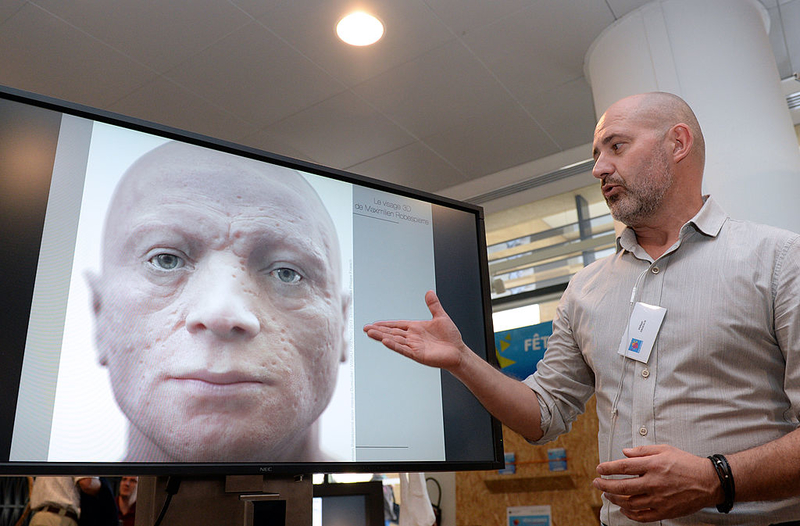
Some believe he was the “incarnation of Terror” whereas others see him as more of an ideologist, who brought democracy to France. Following the massive amount of executions held during the French Revolution, even Robespierre came under scrutiny. He found out what it was like to experience the guillotine. Here we see Philippe Froesch (French head of Visualforensic) presenting the reconstruction of the formidable Frenchman.
Bach As Seen In The Future!
Composer and musical savant, Johann Sebastian Bach is one of those magical music men whose legacy continues to this day. Born in Germany in 1685, he was raised in a family with a musical pedigree. A wonderful musician, Bach has always been remembered as one of history’s great composers. A result of the “Golden Age” of music, he is nestled well within the Baroque period.
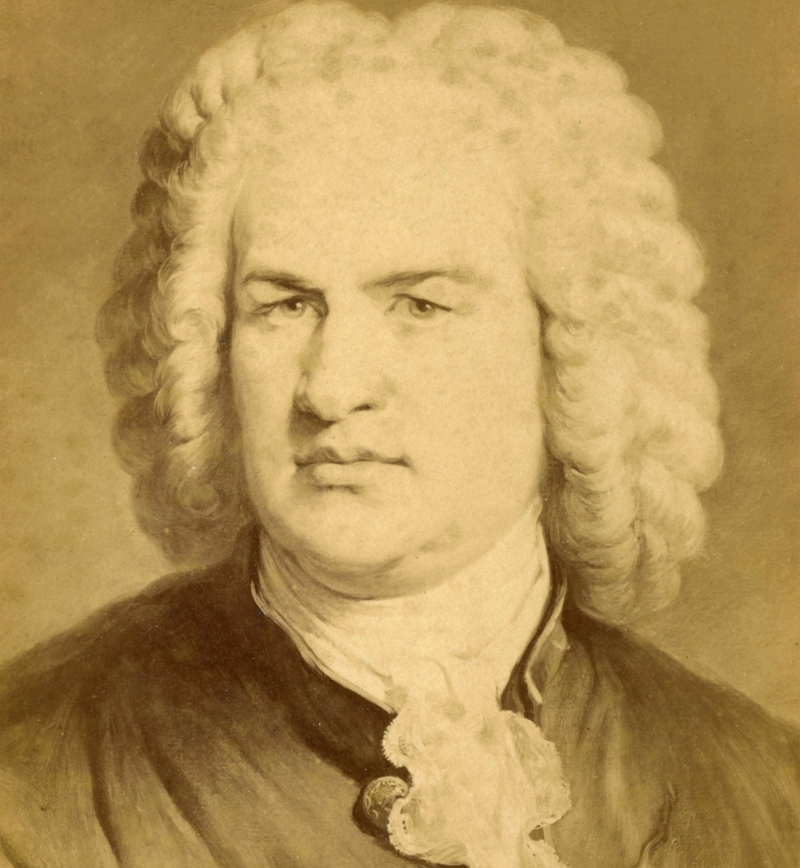
Known for his compositions Art of Fugue, the Brandenburg Concertos, and the Goldberg Variations among other pieces, in the classical world, he is a treasured composer. Prodigious with the organ and nearly any musical instrument he touched, Bach began writing music for the church. In 1721 he completed writing his renowned Brandenburg Concertos, music that defined the period.
A Face of Music
Now Bach, sadly, was buried in an unmarked grave when he passed away, which meant his remains were almost nearly lost to the annals of history. 150 years after his burial, the church where Bach was supposedly buried, was desperately in need of repair. Theologians and music historians quickly thought to try and find Bach amidst the renovations and exhumed a number of graves.
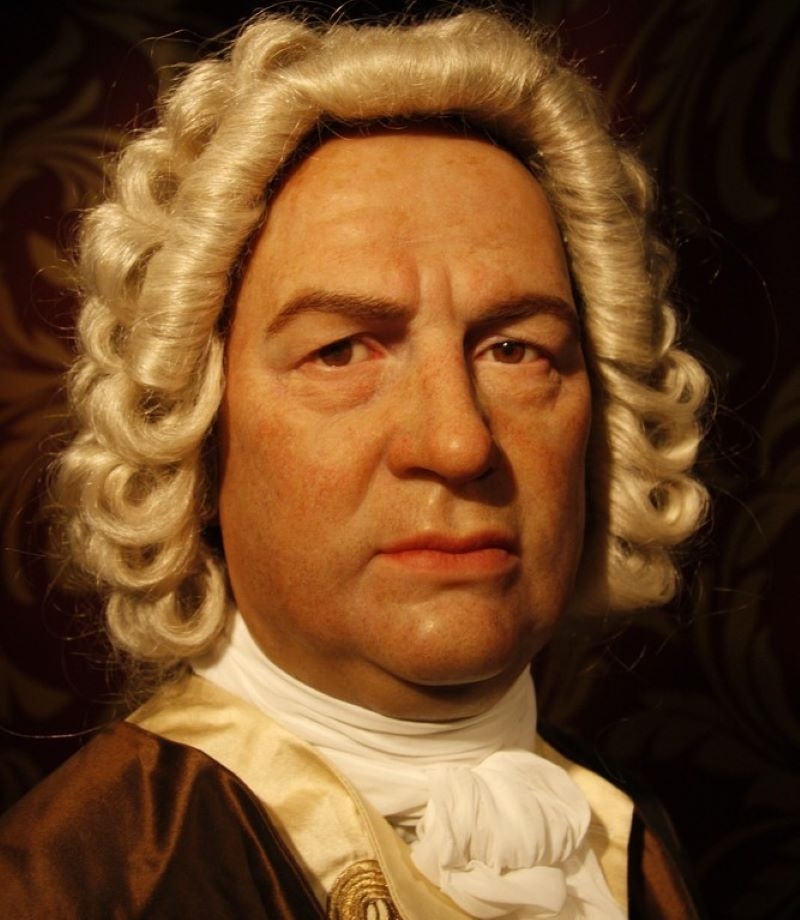
One of which, they believed to contain the body of the famed composer. Now that’s slightly creepy but, there is a certain… harmony in it all! Luckily for us, we don't need Bach's actual remains exhumed to get a glimpse of what the ionic composer may have looked like. Just head to the Madame Tussauds Wax Museum in Berlin to see this masterful recreation. He may not have an angel face, but he sure produced some heavenly music!
Saint Nicholas
Also known as Nicholas of Bari, this old Christian bishop was a real giver. It's no secret that Coca-Cola based an entire campaign on him that would later become the symbol of Christmas. Yes, Santa Claus was modeled on Saint Nicholas, and truth be told, the red and white burly 'Father Christmas' doesn't look that different from the original guy.
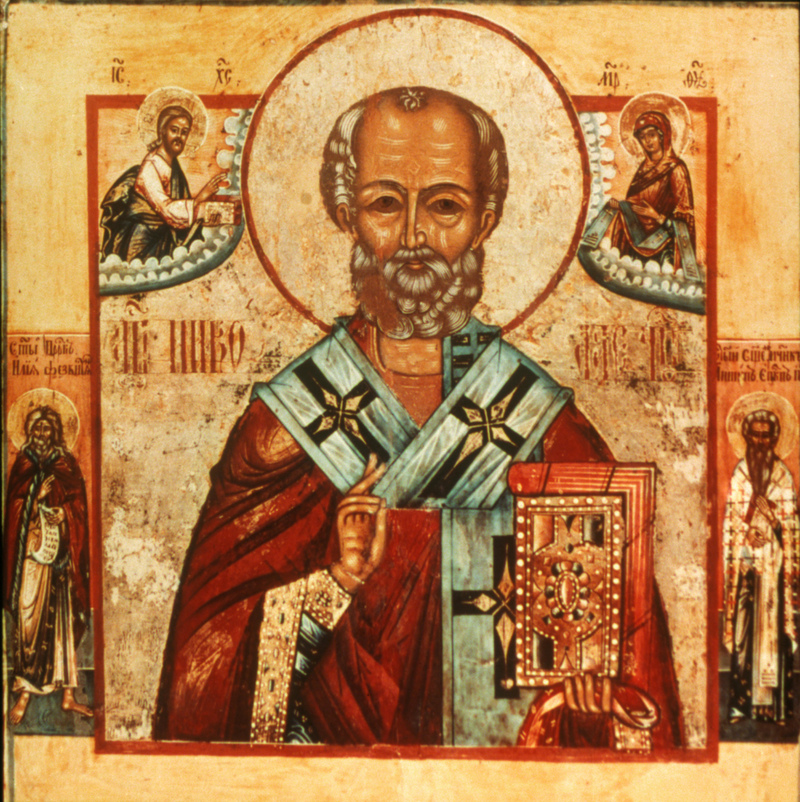
He was also famous for giving gifts to the people and during his lifetime, it is said that a series of miracles and wonderment occurred. There are many paintings of St, Nicholas. In many of them, he dons the iconic red and white robe, and of course, he has a big white beard.
The Real Santa Claus
In recent years, historians have put forth an intriguing perspective, suggesting that Saint Nicholas, the beloved figure associated with Christmas, may have had a distinctive appearance. They propose that the "real Santa Claus" likely possessed olive skin, giving him a Mediterranean complexion, and sported a broken nose.
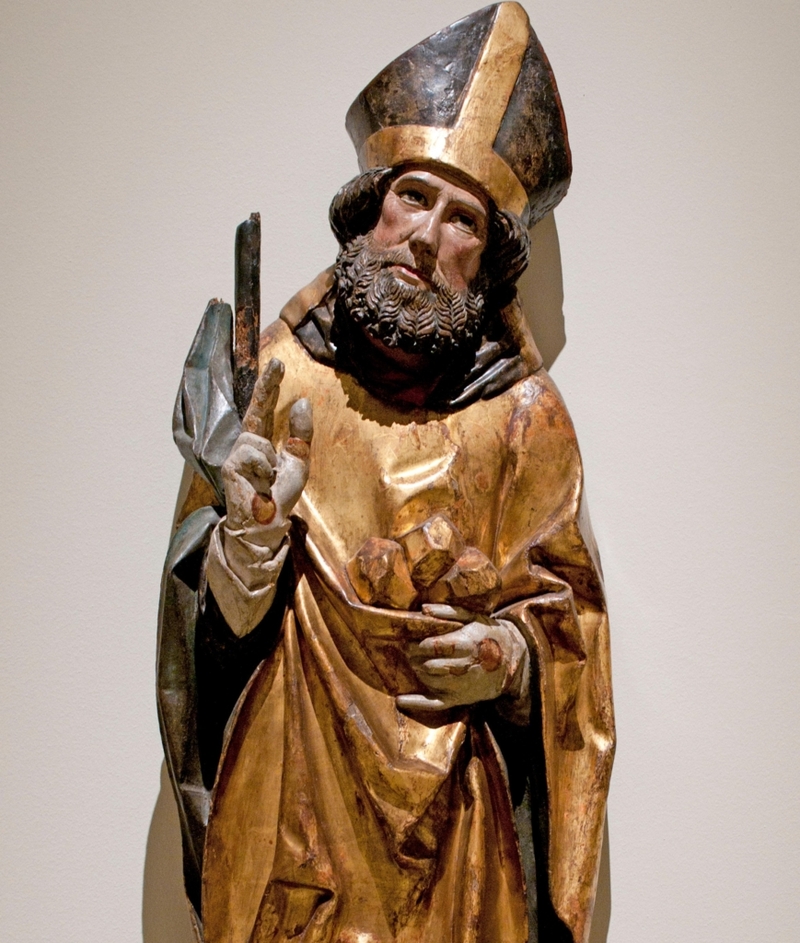
These intriguing attributes align with the depictions found in medieval Eastern Orthodox murals, providing a new lens through which to envision this iconic character. A remarkable testament to the historical reverence for Saint Nicholas is a magnificent life-size statue that can be traced back to the 16th century, and originates from German descent.
Lady of Cao
Lady of Cao is the name of a woman who came from the Moche civilization that resided in Northern Peru. The Moche people are believed to have lived from about 100 to 700 AD during the Regional Development Epoch (Pre-Columbian Peru). The mummy was discovered at the El Brujo archaeological site which is over 40 km north of Trujillo.
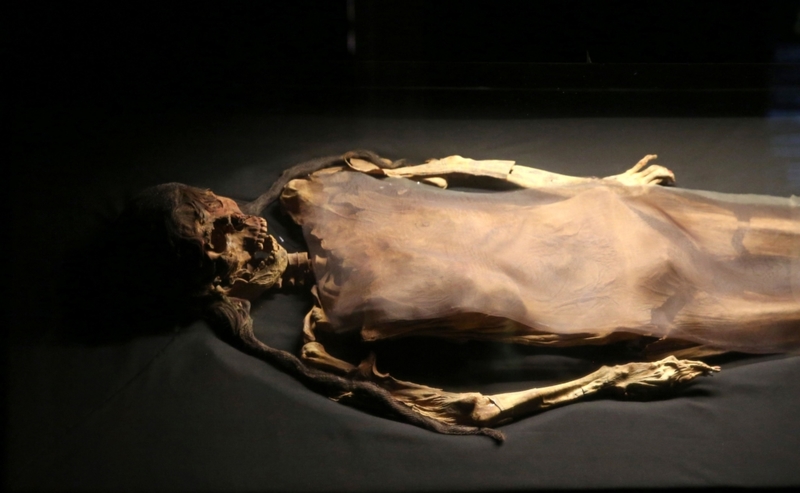
The discovery team of Peruvian archaeologists was led by Regulo Franco Jordan of the National Cultural Institute of Peru. The mummy was found to be covered in tattoos and wrapped in several layers of cloth. Buried alongside her were a number of ceremonial objects, jewelry, and weapons. She was discovered in 2006.
Cao Re-imagined
On July 3, 2017, Peru's Ministry of Culture, culture officials, and archaeologists presented a replica of what would be the original face of the Lady of Cao. Experts used a combination of 3D imaging technology and forensic technology. Referencing her skull structure the process took roughly 10 months to create.
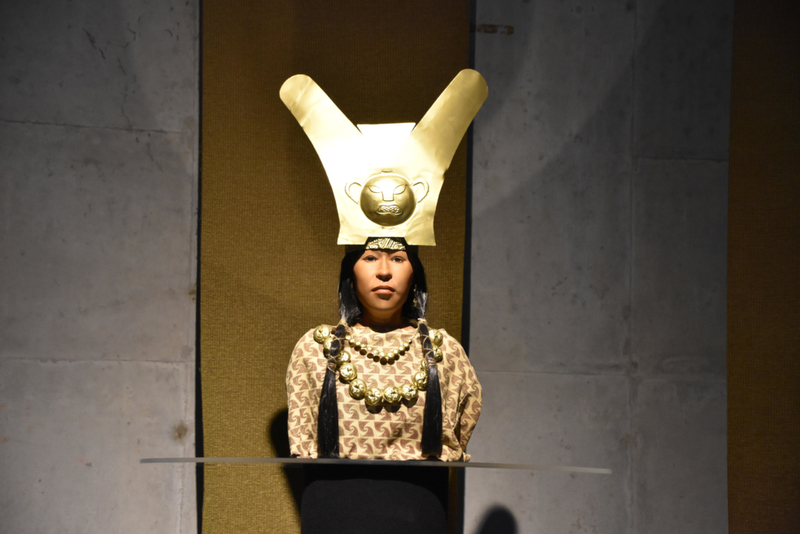
Now that we can look into the face of Lady Cao, it's a wonder to imagine her life. While we experts don't know a whole lot, a modern autopsy indicated that she died in her mid-twenties. Her death was most likely linked to complications during pregnancy or childbirth. The estimated date of death for the Lady of Cao is about 450 CE.
Nicolaus Copernicus
Nicolaus Copernicus- the man who single-handedly put an end to global narcissism. That's right, this was the guy who figured out that the earth rotates around the sun, and not the other way around. Copernicus was a mathematician during the Renaissance period and was also the first astronomer who succeeded in creating a detailed model of the way the planet rotates.
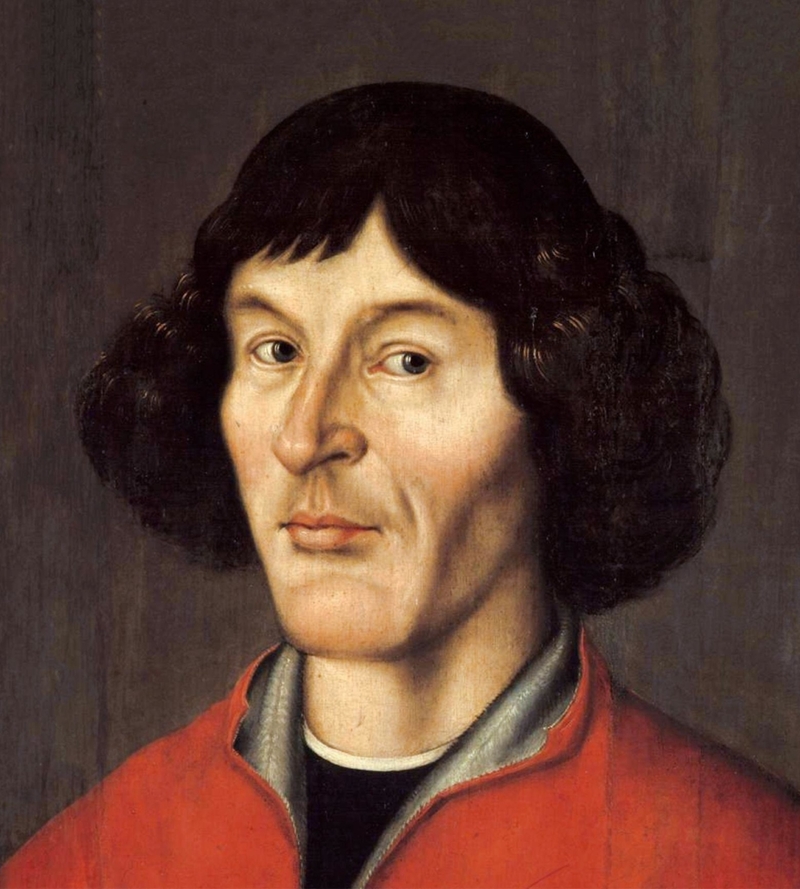
Copernicus had quite an interesting life story. He was born in Royal Prussia, a region that today is a part of Poland. He got his doctorate in canon law and immersed himself in a number of fields, among them; astronomy, economics, politics, and mathematics. He also formulated a well-known economic principle that later became known as Gresham's law.
Unearthing Copernicus
A team of forensic scientists has found what they believe to be Nicolaus himself. The group that unearthed the skeleton in Warsaw sent it to a lab for further analysis. Based on some extremely distinctive features that both the remains and Copernicus shared, experts believe that this could have been him. Warsaw scientists revealed that both Copernicus and his supposed corpse have a scar above the brow.
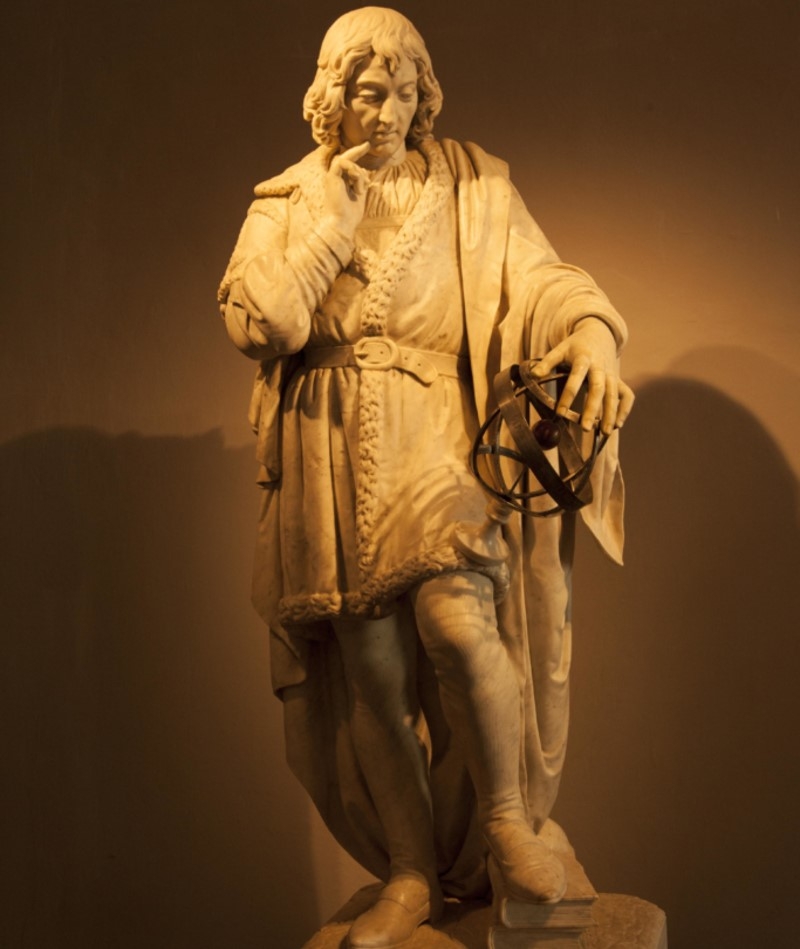
Not to mention that he was also found in the area of Warsaw he is believed to have lived and died in. These features match those seen in portraits of Copernicus from the 1500s. To confirm their theory, archaeologists have mounted a search for the grave of Copernicus' maternal uncle, Lukas Watzenrode. Genetic comparison of the bones will reveal whether they belonged to uncle and nephew.
Simón Bolívar
Simón Bolívar was a political leader who liberated Venezuela, Bolivia, Colombia, Ecuador, Peru, and Panama from the Spanish Empire. Bolívar was lauded for also laying the foundations for democracy for all of Latin America. He was hailed ‘El Libertador’ – the Liberator. After a string of successful military campaigns, Bolívar became the president of Gran Colombia in 1821, (a state covering several Latin American countries, recently liberated from the Spanish).
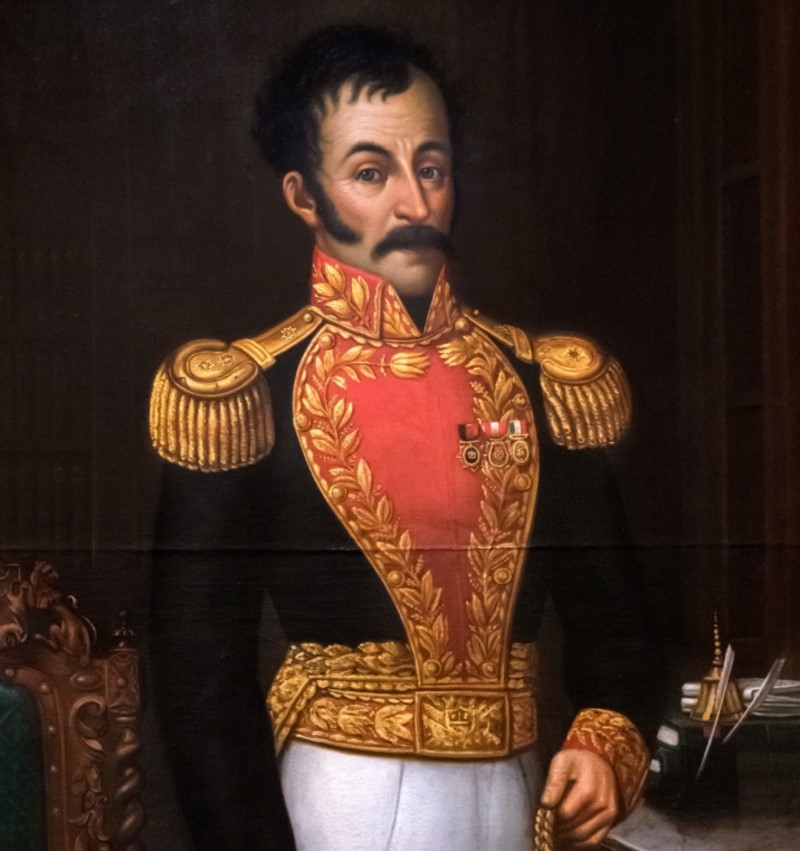
On December 17, in the year 1830, Simón Bolívar died of tuberculosis. He was only 47 years old. His remains were transferred from Santa Marta to Caracas and then subsequently buried in the cathedral of Santa Marta. In 1876, he was moved to a monument set up for his interment at the National Pantheon of Venezuela.
Long Live the Liberator
Looking at a re-imagined CGI image of Simón Bolívar, you would think it's a real live person. Alas, it is not. The CGI reconstruction is a result of over a year's research and digital sculpture that was done by a forensic imagery team. The team, with minimal help from the Venezuelan government, sifted through thousands of images and historical documents to bring Simón Bolívar to life.
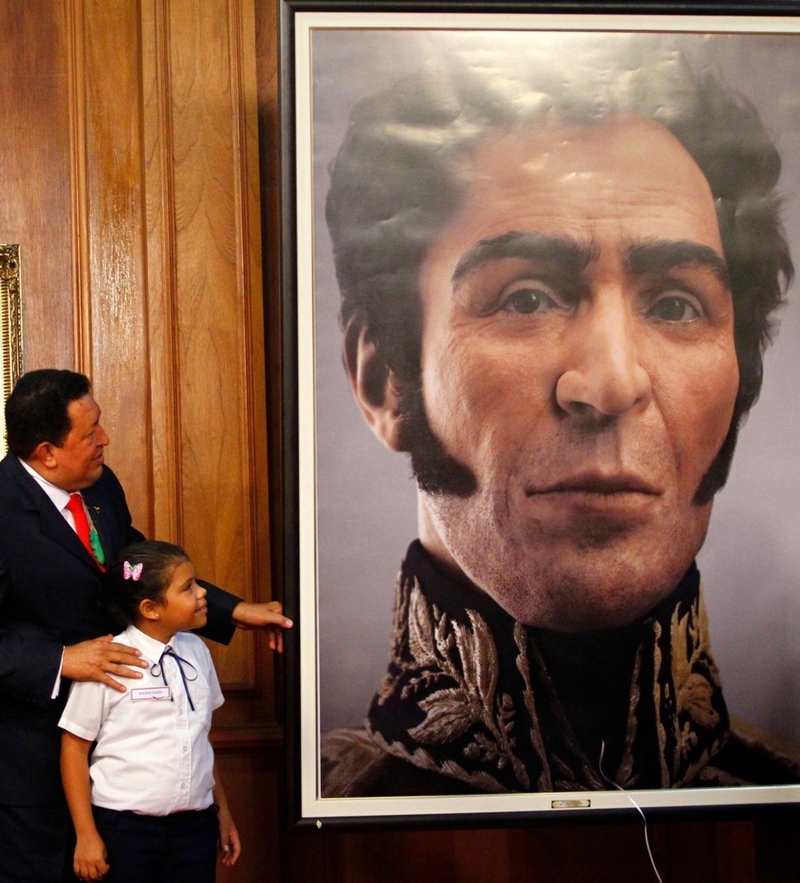
If these results are a true depiction of the real Bolívar, then it's reasonable to say that he was rather easy on the eyes. This image, aside from being far more realistic, is much more aesthetically pleasing than previously painted depictions that always seemed a little cartoonish. The reconstruction was unveiled on the 229th anniversary of the political legend's birth and currently sits in central Caracas.
Catherine the Great
German-born princess Sophie Friederike Aguste was destined for greatness. Sophie was married to Grand Duke Peter, the Heir to the Russian throne. Upon her arrival in Russia in 1744, Sophie was given the title of Grand Duchess Catherine Alekseyevna. What seemed to be a royal fairytale on paper, couldn't have been further from the truth.
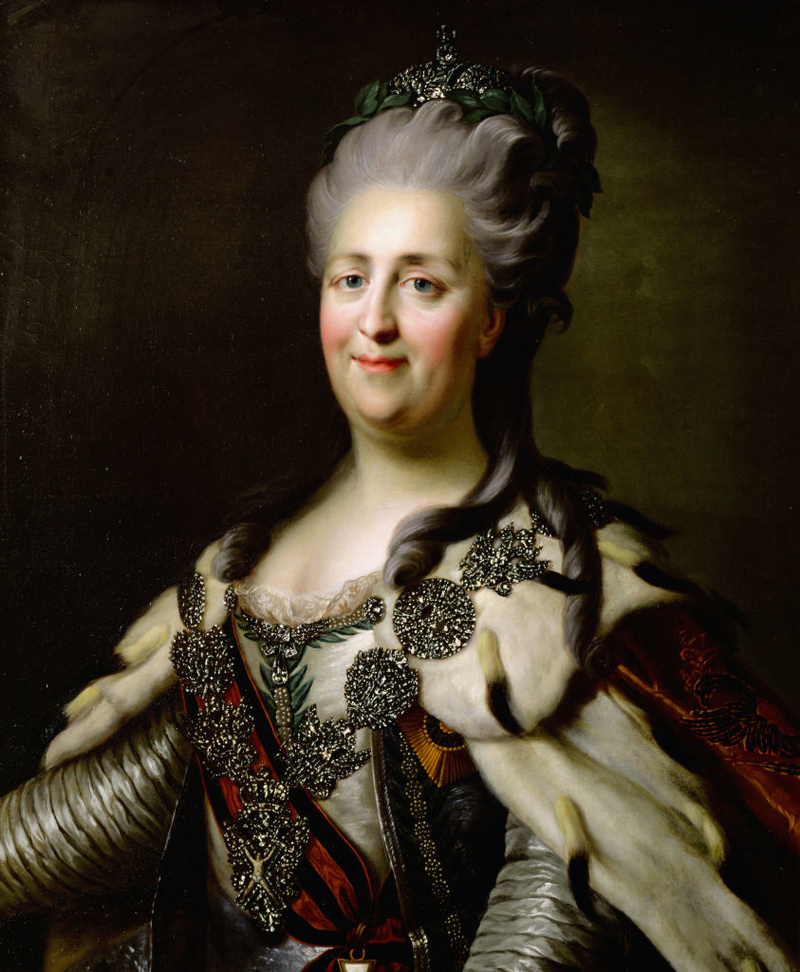
Peter made life incredibly difficult for Catherine due to his erratic and neurotic behavior. We think it is safe to say that their marriage was strained at the very least. In 1762, Catherine ascended to the throne as the Empress of Russia alongside her husband.
Truly Great
In the face of her tumultuous marital struggles, Catherine's unwavering intellect, captivating charm, and unyielding ambition proved to be the catalysts that propelled her toward greatness. Her indomitable spirit led her to orchestrate a daring coup, overthrowing her husband and assuming the reins of power. With resolute determination, she single-handedly steered Russia into a remarkable era of Enlightenment, marked by progressive reforms and intellectual growth.
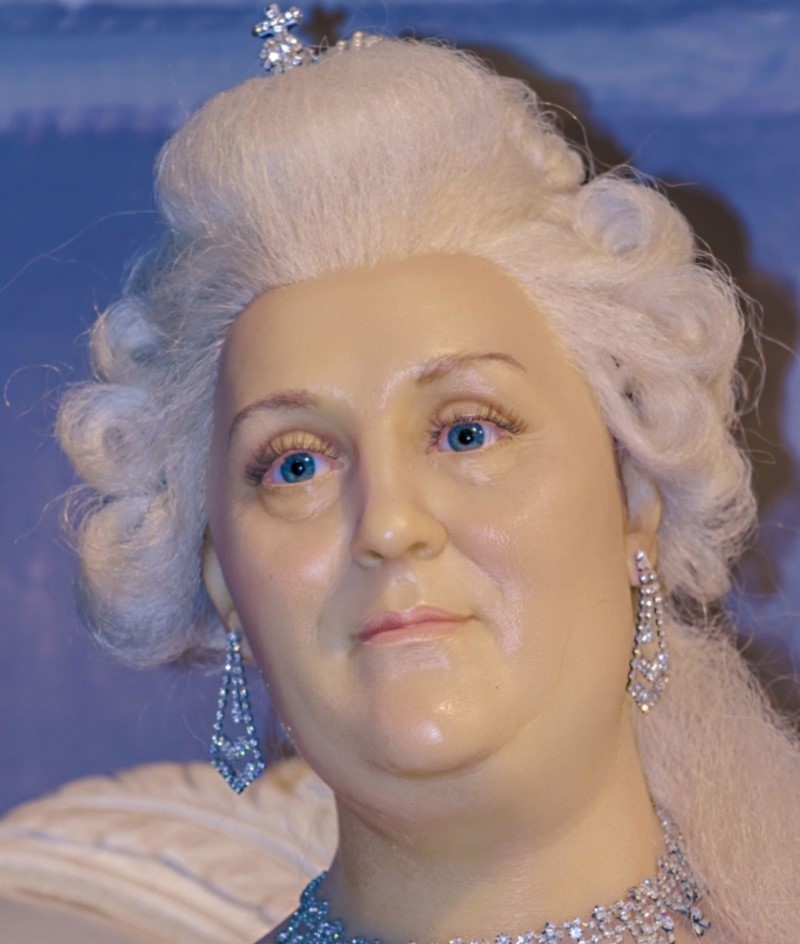
Additionally, Catherine's visionary leadership resulted in the expansion of Russia's territories, solidifying its status as a formidable global power. Here, we behold a mesmerizing wax-figure recreation of the formidable Empress, her luminous blue eyes gleaming with a brilliance that rivals even her captivating diamond jewelry.
Dante Alighieri
Alighieri has been immortalized as one of the most iconic poets of the middle ages. Born in modern-day Italy, Dante wrote the Divine Comedy or Comedìa. While his work stood the test of time, unfortunately, he didn't. After a scandalous period of accusations of corruption and exile, Dante died of what is believed to be malaria.
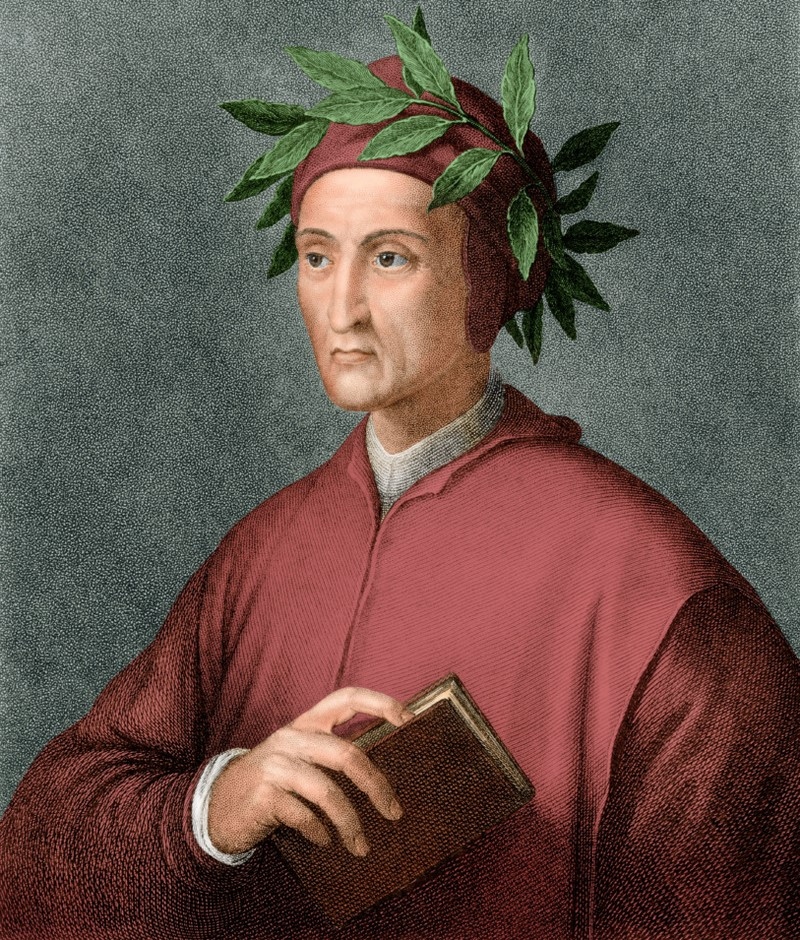
He was buried in Ravenna at the Church of San Pier Maggiore (later called Basilica di San Francesco). Bernardo Bembo, the praetor of Venice, erected a tomb for him in 1483. Dante lived to the age of 56 and died in the year 1321. His work has survived centuries and is until this day an inspiration for writers and artists. He certainly left quite the legacy.
Not So Scary Looking
Dante Alighieri has been immortalized as a rather bony-faced and hawk-nosed intellectual. This is mostly due to Raphael's portrait of him. The Italian Renaissance painter was not very forgiving when depicting the literary legend, and while this image of him has made it all the way to Italy's two euro coin, it might not be entirely accurate.
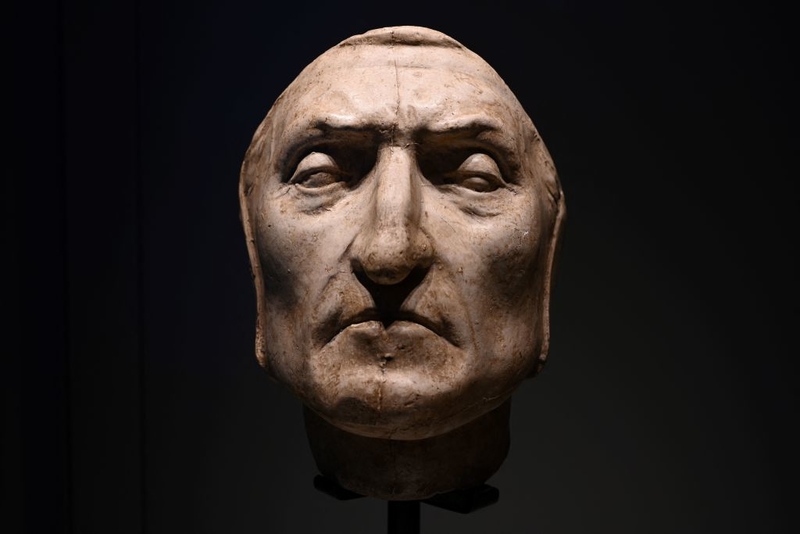
Researchers from the University of Bologna worked on re-piecing the poet and found it to be very different from earlier portraits that were done by Botticelli, Raphael, and Giotto. Professor Giorgio Gruppioni, the lead anthropologist of the team was very happy with the restoration. It took him and two colleagues around a year to complete, he added. If you're eager to check out Dante's death mask, head to Palazzo Vecchio in Florence, Italy!
Robert Burns
The national poet of Scotland, Robert Burns was a famous poet and lyricist nicknamed the Ploughman Poet and was actually chosen as the greatest Scot of all times by the Scottish public in a vote held in 2009 by a local television channel. His most famous song is Auld Lang Syne, which is traditionally sung in English-speaking countries at the end of the year.
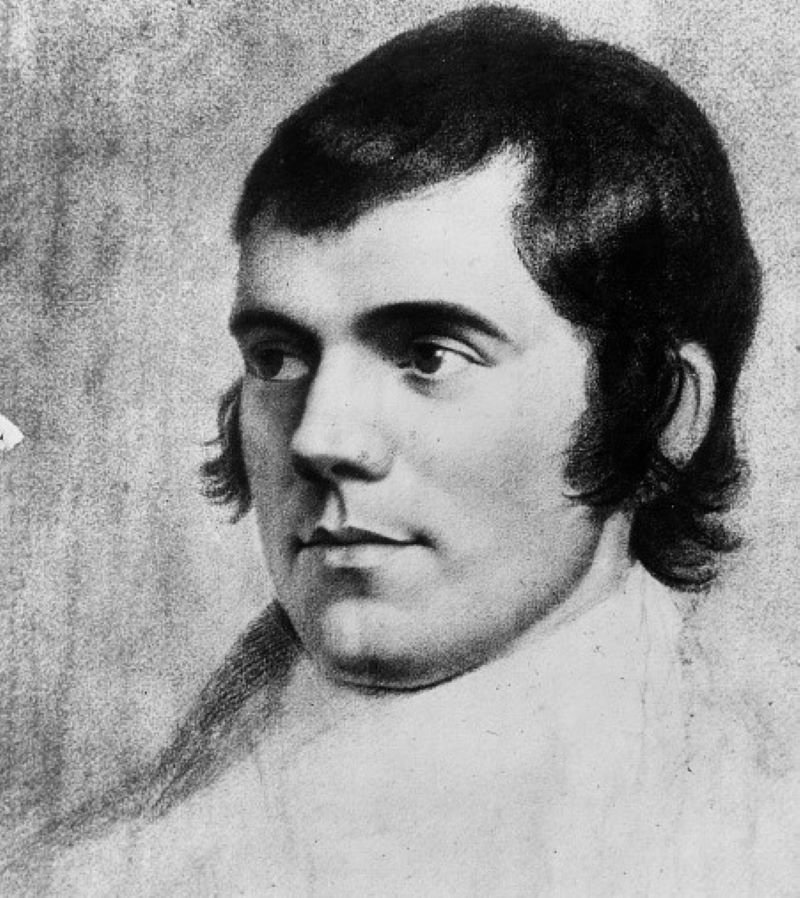
It is said that Burns' face was depicted in more cities around the world than any other historical figure. He also appeared on stamps in Russia and the United Kingdom and has been featured on Scottish currency. Although the most famous portrayal of the poet was painted in 1787 by Alexander Nasmyth and resides in the Scottish National Portrait Gallery. The painting was commissioned by Burns’ publisher and was meant to be engraved on a new edition of his poems.
The Bard’s True Face
The project of reconstructing Robert Burns’ face began in 2010 in a collaborative effort by Scottish poet Robert Burns enthusiast Rab Wilson and Caroline Wilkinson, Professor of Craniofacial Identification. However, in 2016 the LJMU Face Lab got involved and used a partial cast of his skull, relevant documents, and historical portraits to create the 3D model.
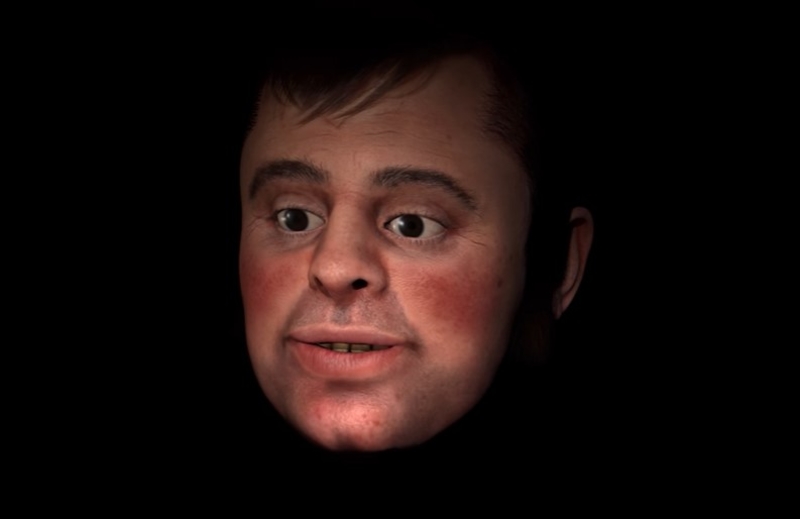
But just showing what he looked like wasn’t enough for this team. They wanted to have him actually recite one of his poems. They recorded fellow poet and Scotsman Rab Wilson reciting Burns’ poem, ‘To a Mouse’ and used DI4D’s Facial Motion Capture System at the 3D Visualization Unit at the University of Dundee. They then superimposed Wilson’s facial animation and voice to create the final animation.
Jonathan Swift
The legendary Anglo-Irish author Jonathan Swift was born in 1667. He was known for his satirical style and is most famous for his novel Gulliver’s Travels. Swift was also an essayist who wrote many pieces regarding politics and philosophy. He used his platform to publicly criticize science, which was gaining popularity at the time. In portraits, Swift was often depicted as a stylish gentleman of his times with a white wig and seemingly powdered white face.
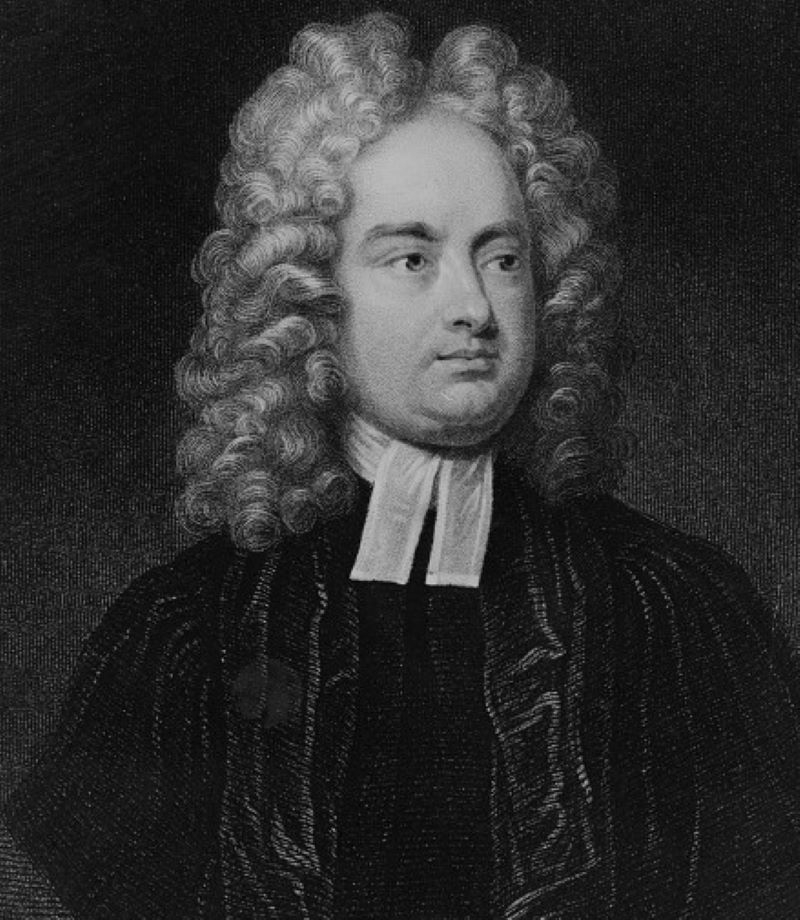
Swift worked alongside his muse Esther Johnson (nicknamed Stella by the writer) for most of his life. The nature of their relationship is unclear and has been speculated about since they were both among the living. Johnson basically lived in Swift’s house and there have been rumors that the two were secretly married. If that was the case, it is not clear why it was kept a secret, but we will probably never know.
The Real Swift
Artist Van Nort constructed this life-like bust of Jonathan Swift which is on display at the National Portrait Gallery in Dublin. Color us impressed! Every little detail of Swift's face is depicted, even his eye-bags and chin dimple. It's completely uncanny when you look at the paintings side by side with it.
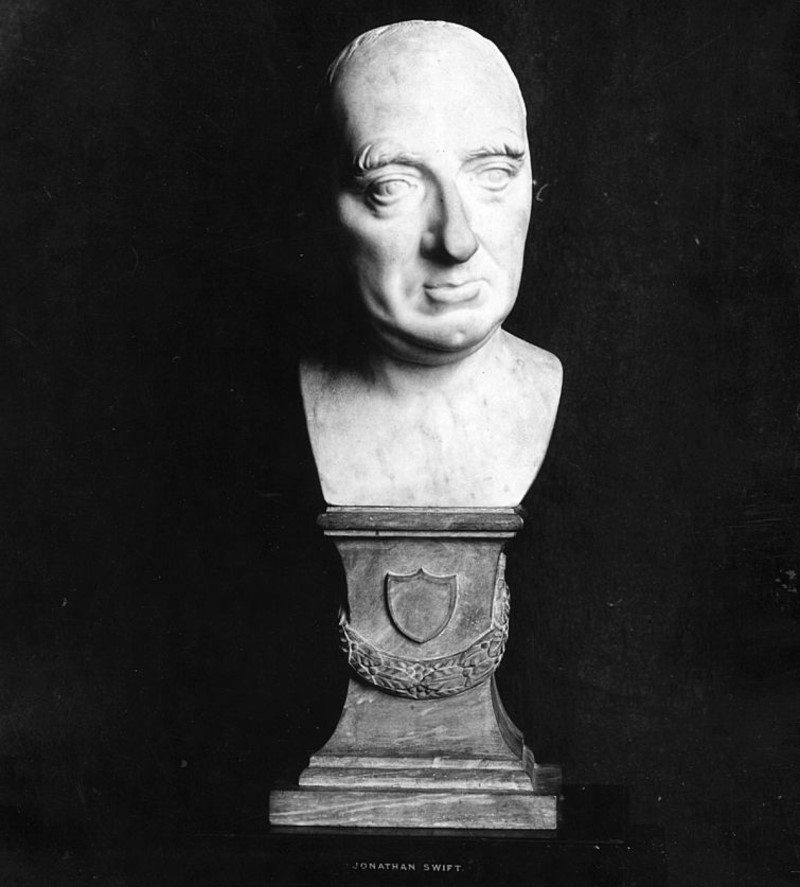
Side note, we wonder if having the "Swift" surname automatically makes you a great writer. Just look at Jonathan Swift (a prolific writer of the 17th century) and Taylor Swift (a pop icon and famous songwriter of the 21st century). The evidence is undeniable! Maybe we'll try changing our surnames.
St. Valentine
Valentine's Day is such a popular day all around the world and is often associated with love and romance. But many don't know that much about the Saint that inspired the annual celebration. The 3rd-century Roman saint of courtly love is well known for the holiday named after him which takes place every February 14th and makes us all make a frantic dash to the supermarket for some last-minute chocolate and flowers.
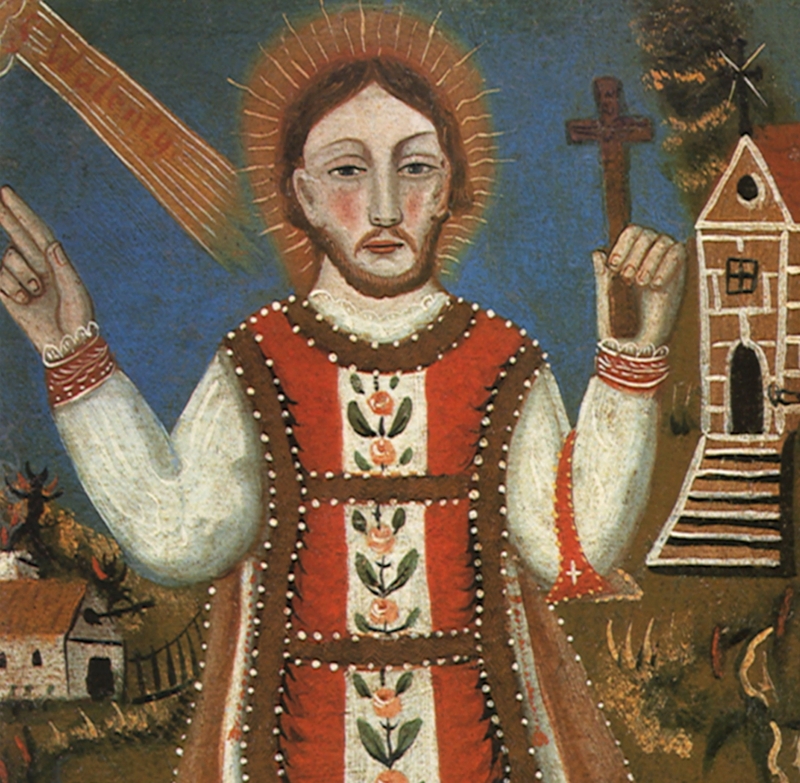
But the real St. Valentine was a clergyman who cared for persecuted Christians. He was martyred and his remains were buried at a Christian cemetery in the north of Rome, on February 14, which has been observed as the Feast of Saint Valentine, the basis of the modern holiday.
Be My Valentine
There are some romantic aspects to the life of the saint. He performed secret marriage ceremonies after they were banned by Emperor Claudius II. The emperor believed that if he kept young men from marrying and having children, he would have more soldiers for his army. Marriage ceremonies, especially Christian ones were still new, and Valentine was caught, imprisoned, and tortured.
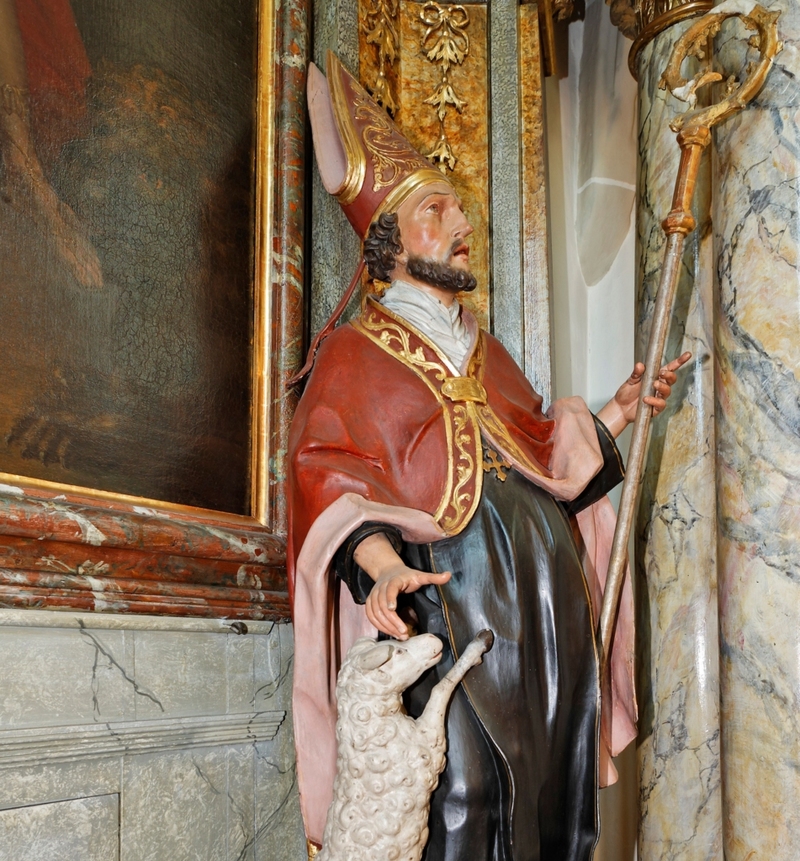
There is a legend that Valentine fell in love with the jailer’s daughter and before he died left her a note that was signed ‘from your valentine’. Here we see a statue depicting the saint, sheep at his side, in the Parish church, St. Veit, Austria.
Jane Austen
Jane Austen, the celebrated author whose name has become synonymous with timeless literary British works, was born into a family that revered knowledge and the written word. With remarkable talent and insight, Austen delved into the intricate webs of human emotions, exploring themes of love, societal status, and marriage within the context of the 18th-century landed gentry.
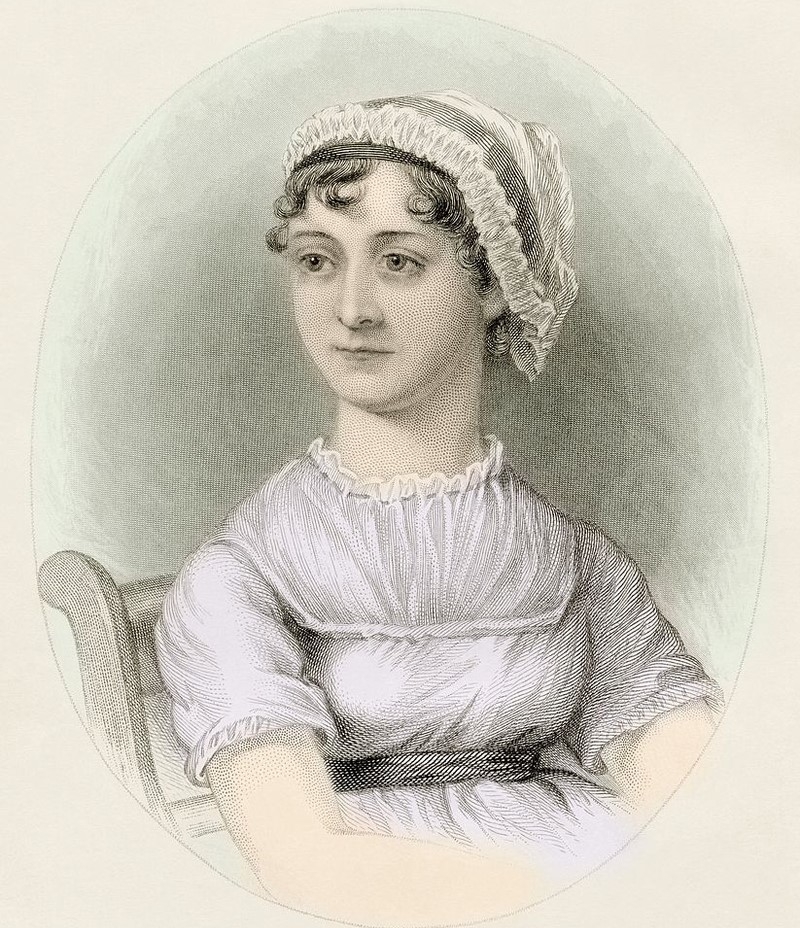
Her novels, such as the beloved "Pride and Prejudice," "Sense and Sensibility," and "Emma," not only captivated readers with their compelling narratives. But they also offered a glimpse into the lives of ordinary individuals navigating their way through the complexities of their time.
Classical Depiction
In addition to her exploration of love and societal status, Jane's literary prowess also illuminated the precarious reliance women of her time placed on marriage as a means to attain a semblance of security. Her works, characterized by their exquisite prose and astute observations, have transcended the boundaries of time and continue to be revered as enduring literary masterpieces.
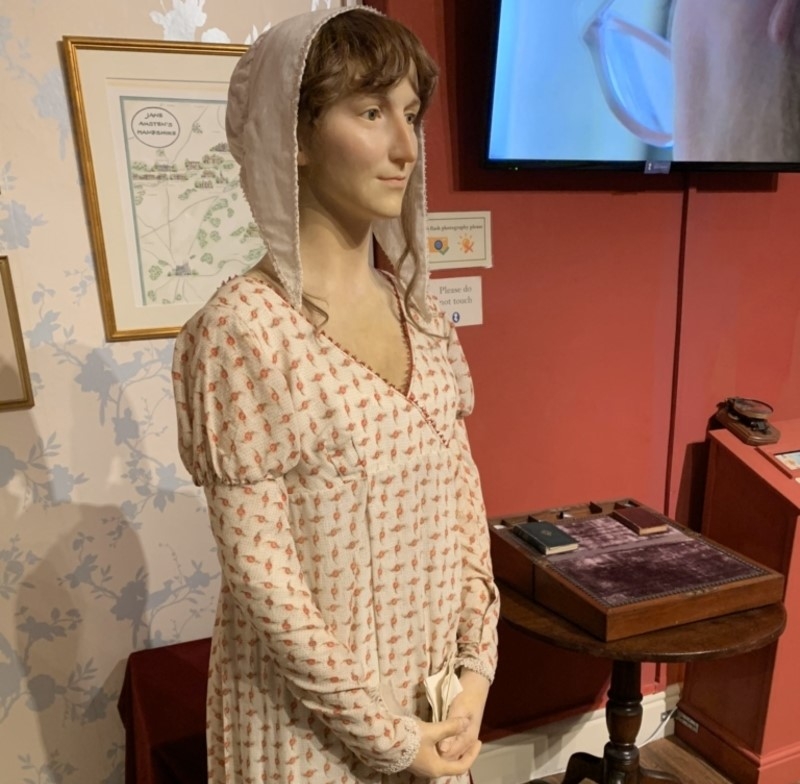
They resonate deeply with scholars, critics, and readers across generations, capturing the essence of human experiences with remarkable precision. The Jane Austen Centre in Bath, paying meticulous attention to detail, employed a combination of Jane Austen's brother's portraits, cutting-edge forensic technology, and expertly crafted waxwork.
Joan of Arc
From peasant poverty to being canonized as a Saint by the Roman Catholic church, Joan of Arc is a historical icon. Not to mention the fact that there might not be a woman more revered by the French people than her. Throughout her short life, Joan allegedly heard voices.
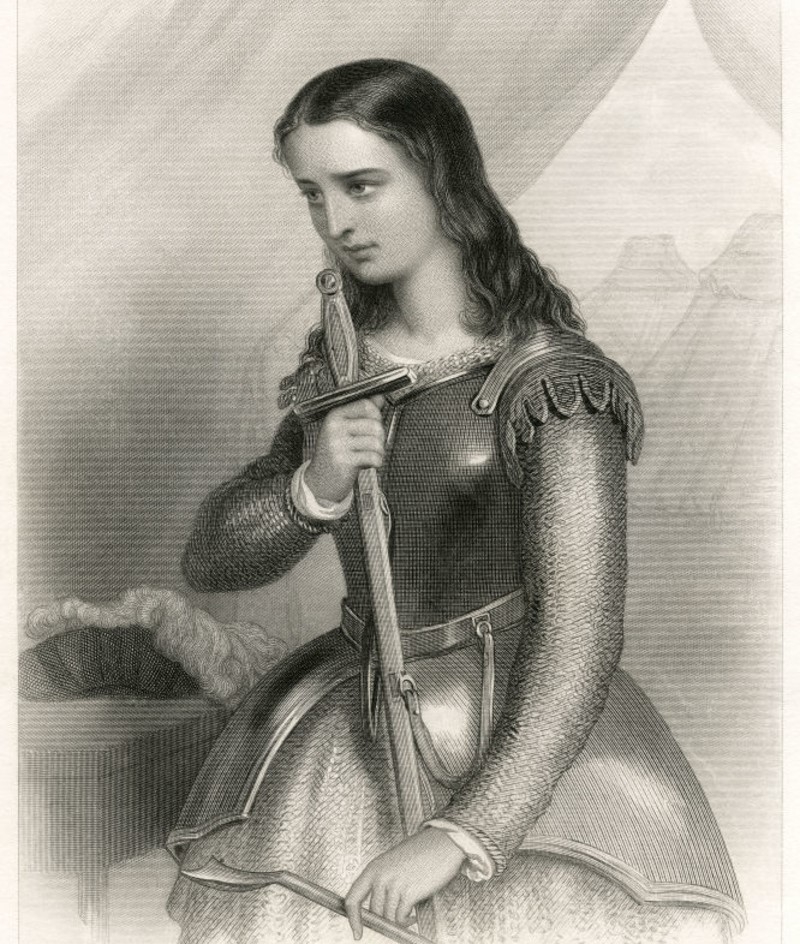
She believed that God has given her the responsibility to ensure that Charles VII of France ascended to the throne to save France. After convincing Charles to allow her to do so, Joan led the French army to victory over England in the city of Orléans. Did we mention this was all at the tender age of 17!
Joan In Disguise
At the tender age of 19, Joan's valiant journey took a tragic turn when she was ultimately seized by the Burgundian army. Accused of witchcraft and heresy, she faced a harrowing trial that ended in her agonizing execution by being burned at the stake. However, history would eventually right the profound injustice inflicted upon her.

In 1920, her conviction was rightfully overturned, and Joan of Arc was posthumously bestowed the honor of sainthood, becoming a revered Saint in the eyes of the faithful. A striking wax figure now stands as a testament to her indomitable spirit, featuring her iconic cropped hair and donning armor.
Mary Rose Archer
The Mary Rose, a magnificent carrack-type warship, proudly served as a stalwart vessel within the English Tudor navy under the reign of King Henry VIII. Throughout its illustrious 33-year service, this formidable ship courageously faced the perils of numerous conflicts against France, Scotland, and Brittany.

However, it was on that fateful day, July 19th, 1545, that the Mary Rose led a daring assault against an encroaching French fleet, only to meet a tragic fate in the treacherous waters north of the Isle of Wight. The exact cause of its sinking remains an enigma that continues to intrigue historians and maritime enthusiasts alike, leaving the story of the Mary Rose forever shrouded in mystery.
The Face of an Archer
500 years after drowning aboard Henry VIII’s flagship, the Mary Rose, scientists have been able to give us a glimpse of the legendary ship’s archer. His work as an archer had severely damaged his shoulder joints, twisted his spine, and caused grooves to appear inside of his right finger bone. The archer was taller than most of the crew at 5ft 10in and had especially strong legs.

A strong body was essential for an archer at the time because the 16th-century longbow had a draw of up to 90kg. The man’s skull was scanned by laser to create an exact replica using a 3D printer. It was then sent to forensic expert Oscar Nilsson, who specializes in reconstructing the faces of unidentified bodies for police investigations. Nilsson then built up the archer’s face to create the final image.
Marie Antoinette
Perhaps Marie Antoinette, the ill-fated French queen, is best known for a phrase she never actually said ("let them eat cake") and for losing her head. Once you learn that Marie Antoinette was crowned the Dauphine of France at the very young age of 19, her misguided spending habits become a little more understandable.
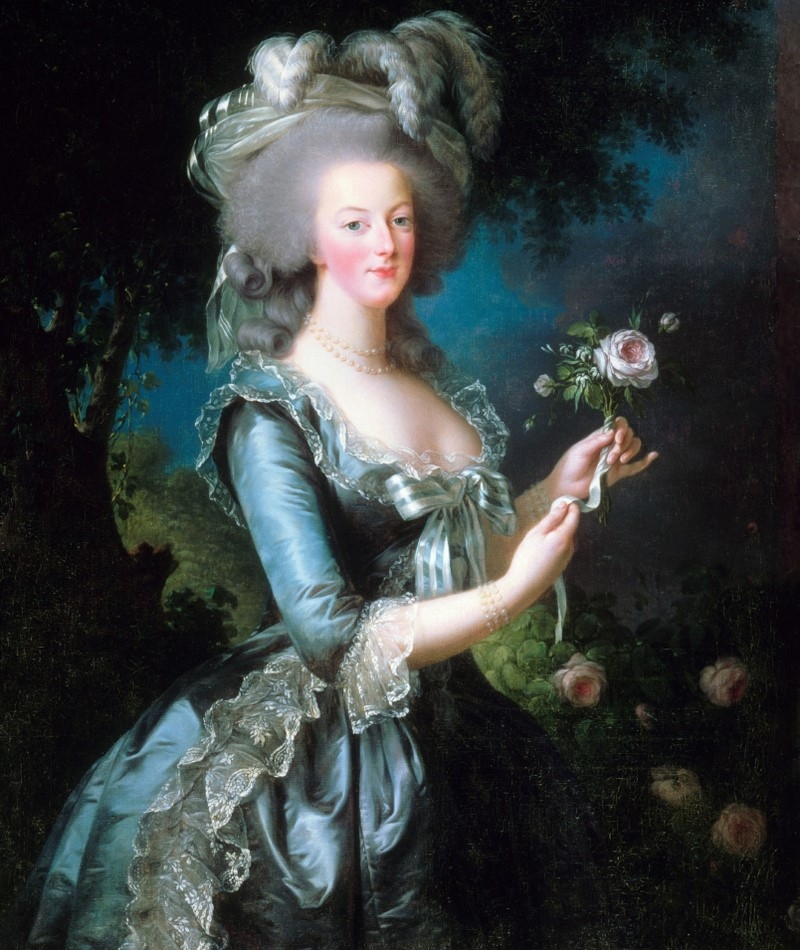
The French Revolution ushered in an era of seismic political and social shifts that ensured that Marie Antoinette was certainly the last queen of France. Tragically, she was executed in 1793 at Place de la Concorde, which is now a popular tourist attraction in Paris, France.
A Real-Life Queen
Throughout her tumultuous reign as a young queen, before her tragic decapitation, Marie Antoinette graced numerous portraits, capturing her enigmatic presence. Yet, thanks to the marvels of CGI technology, we can now glimpse a more vivid representation of her true likeness.
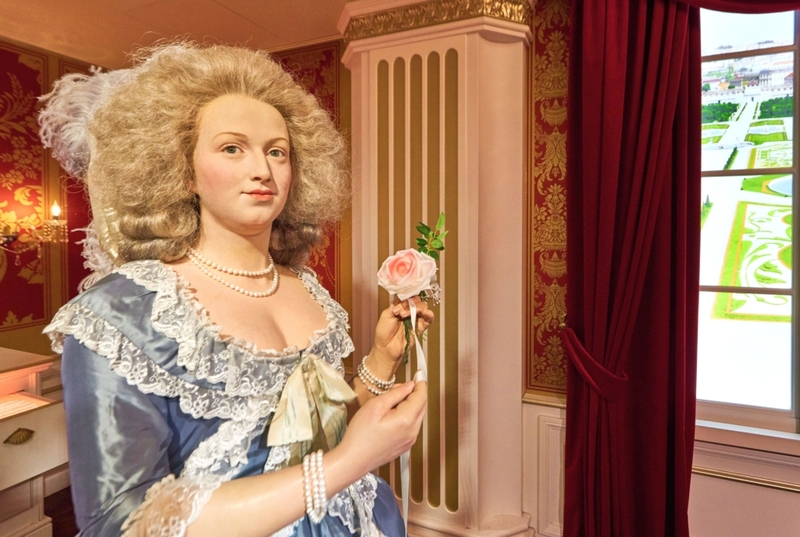
Presenting an exquisite waxwork recreation, Marie Antoinette is depicted in all her opulent glory, dripping with luxurious adornments that epitomize her extravagant lifestyle. The uncanny realism of this creation is such that it feels as if the Queen of France herself is casting a direct gaze upon us, evoking a momentary sense of awe and reverence. The question arises: should we bow in deference or pay homage to her regal stature?
Anna Marie Tussaud
Anna Marie Tussaud, to whom we owe a debt of gratitude for several astonishingly lifelike wax depictions, embarked on her artistic journey under the tutelage of Phillipe Curtis, a doctor and a passionate waxwork artist. It was through this fortuitous encounter that Marie discovered her innate talent for the craft, honing her skills to create remarkable wax figures of prominent figures of her era.
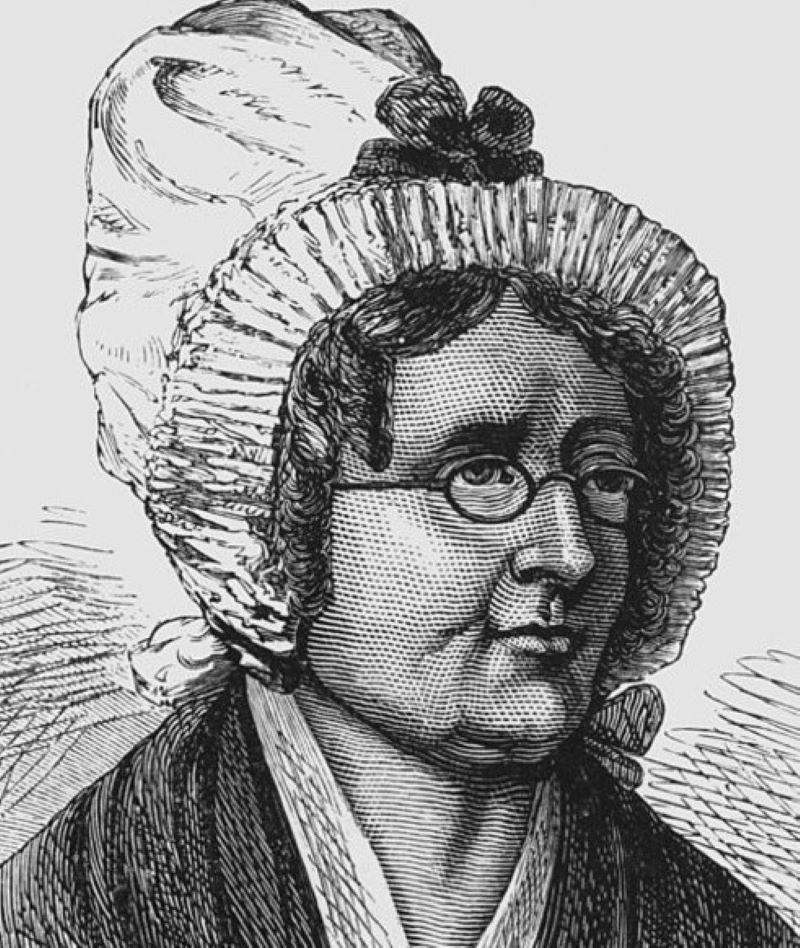
Her artistry knew no bounds as she meticulously crafted wax renditions of revered icons, including luminaries like Benjamin Franklin and Voltaire, capturing their essence with remarkable precision. Anna Marie Tussaud's unwavering dedication and skillful craftsmanship have forever immortalized these historical figures.
Madame Tussauds
Marie's passion for her wax creations, forged in collaboration with Curtis, took her on an extraordinary journey across the European continent. Eventually, she established a lasting legacy by founding a permanent exhibition on London's iconic Baker Street, which stands today as the renowned "Madame Tussauds." This visionary venture has since flourished, expanding into a global network of esteemed wax figure museums.
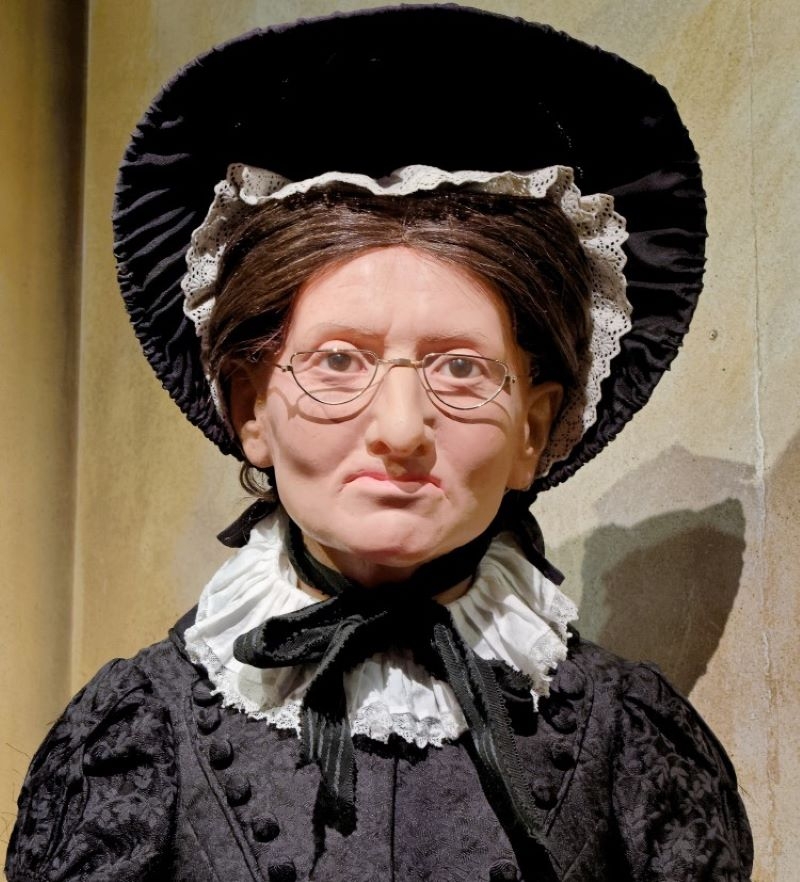
In this particular instance, we are presented with a remarkable wax figure: none other than the pioneering woman who sparked it all. It is almost unimaginable to visit Madame Tussauds without encountering a lifelike depiction of the ingenious Madame Tussauds herself, for her absence would indeed leave a palpable void in the immersive world she created.
King Henry VIII
It's safe to say that King Henry VIII of England did not have the best reputation. He ostracized the Church of England and the Pope while declaring himself "Supreme Head of the Church of England." Marriage was not his strong suit either. He had six wives (and countless mistresses) during his reign as king. He eventually annulled three of his marriages and ordered the beheading of two of his wives. Yikes!
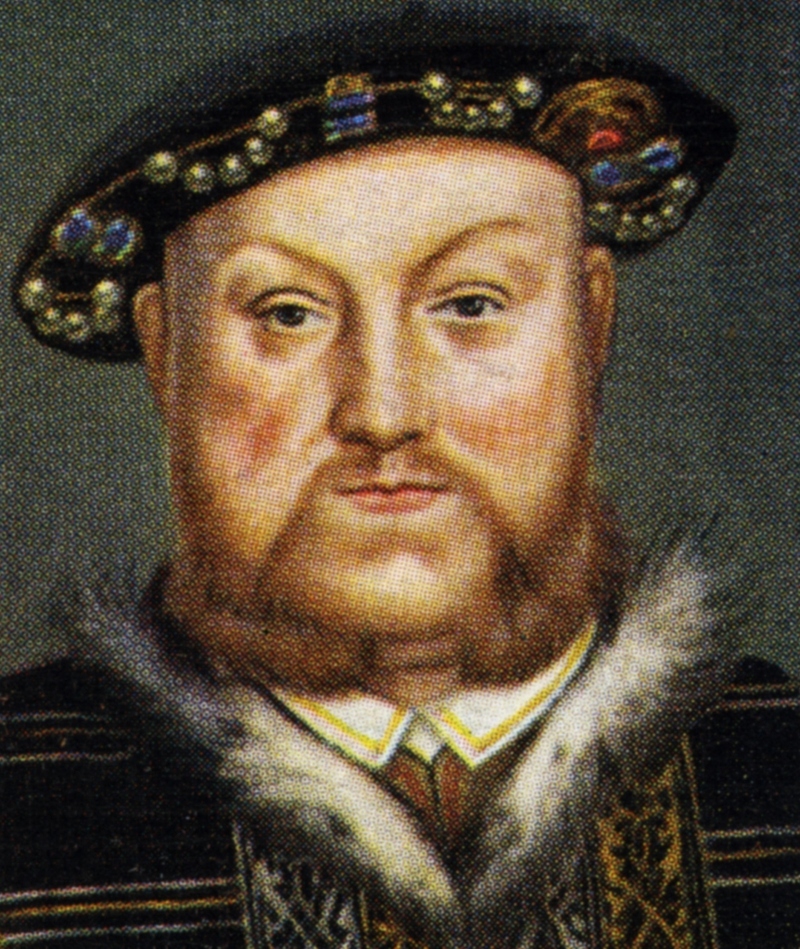
King Henry VIII seemed to have a passion for violence as he ordered the execution of more people than any other ruler in England's history. Some historians have theorized that an alleged jousting injury flipped his switch from a fair ruler to the vile and violent king we know of today.
Not So Regal in Real Life
Perhaps it's not just us, as the knowledge of King Henry VIII's notorious and chilling reign of terror adds an unsettling aura to this astonishingly lifelike wax figure. The uncanny realism achieved through waxwork magic can be quite uncanny, almost surpassing our expectations.
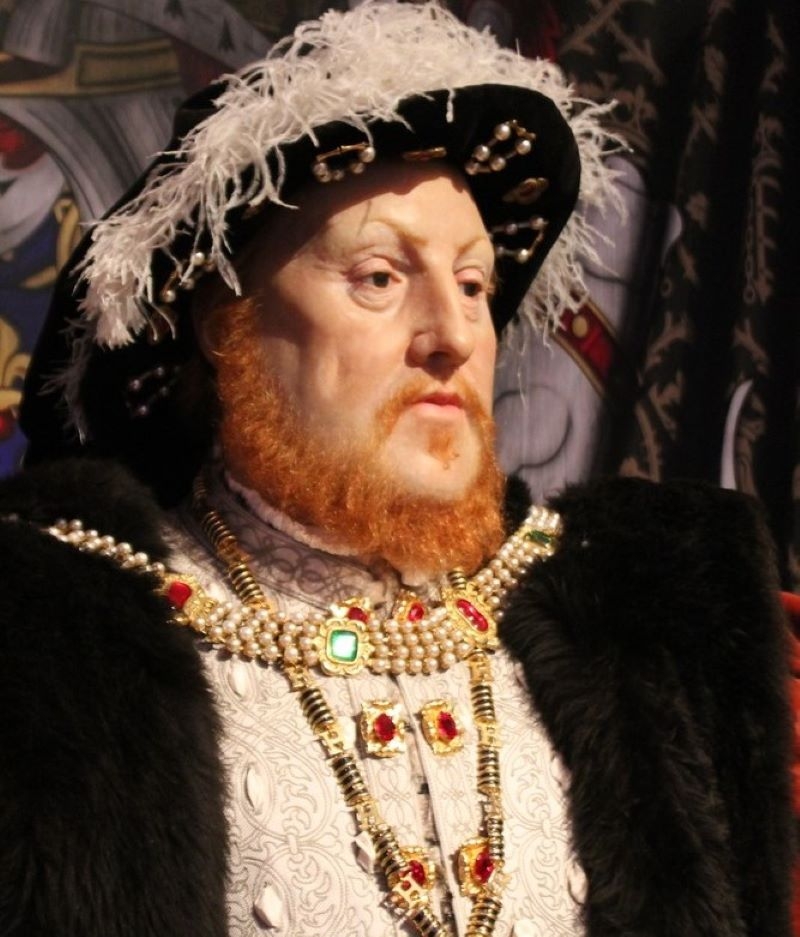
However, it's difficult not to notice that this rendition of the formidable king portrays him more as a grumpy grouch than a symbol of regal power. Yet, regardless of the slight departure from his majestic appearance, there is no denying the air of intimidation that radiates from his visage, even without the opulent, jewel-encrusted feathered hat that would have adorned his head in real life.
Vincent Van Gogh
Known for his incredible post-impressionist portfolio of art, Vincent van Gough certainly left his mark on the art world. He was able to produce over 2,000 pieces of art despite struggling with his mental health. This was particularly impressive given the fact that his struggles came at a time when treatment for such conditions was inadequate at best.
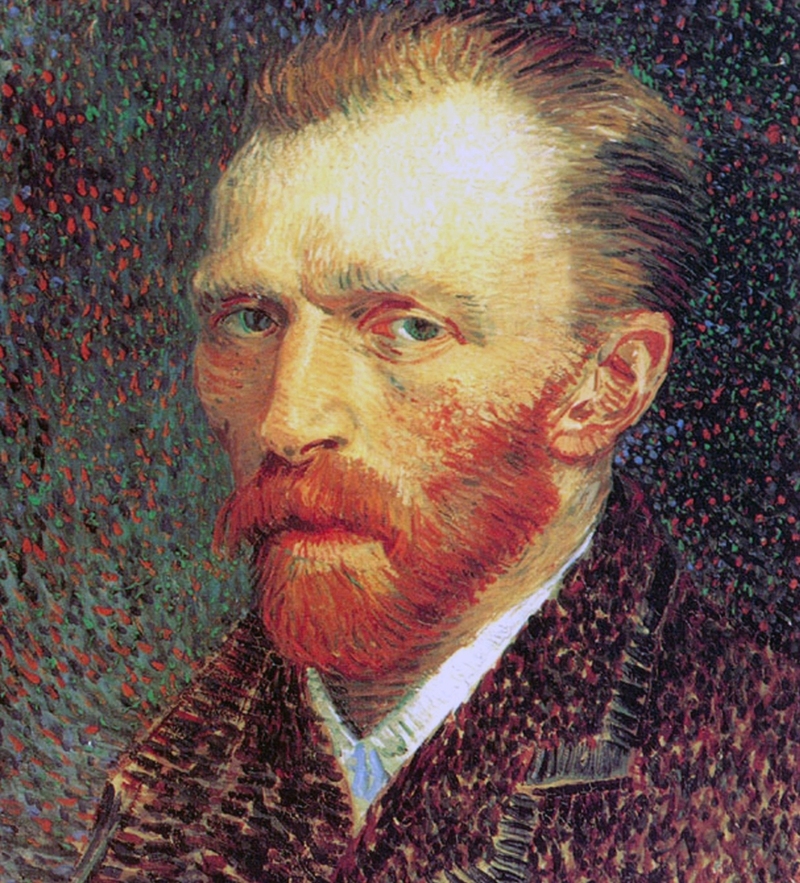
In a rather sad twist of fate, the prolific painter only found acceptance, admiration, and fame after death. We can't help but wish that he was able to see the immense impact his art has had on the world as we know it.
Selfies and Self-Portraits
This incredibly realistic CGI portrayal of Vincent van Gogh undeniably breathes life into the enigmatic painter. Despite his unconventional lifestyle, which largely consisted of sustaining himself on coffee and cigarettes, he exudes an air of elegance and sophistication in this depiction.
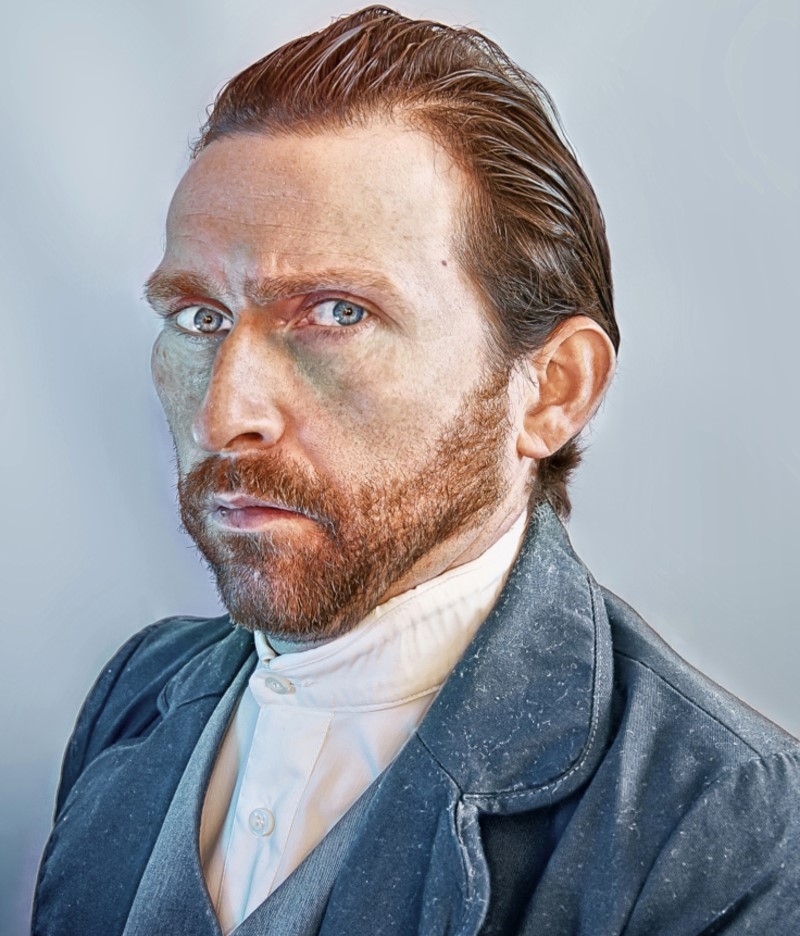
It is intriguing to imagine how seamlessly Vincent would have assimilated into the modern era, given his penchant for self-expression through self-portraits and his fashionably groomed facial hair. There is an uncanny parallel between his love for capturing his own image and the ubiquitous trend of taking selfies today. It's almost as if Vincent possessed an innate understanding of contemporary sensibilities.
Anne Boleyn
In her relatively short life, Anne Boleyn reached great heights and heartbreaking lows. She was (unluckily, it would turn out) King Henry VIII's obsession for several years. So much so that he defied the Church of England in order to marry her. From 1533 to 1536 she reigned as the Queen of England besides King Henry VIII.
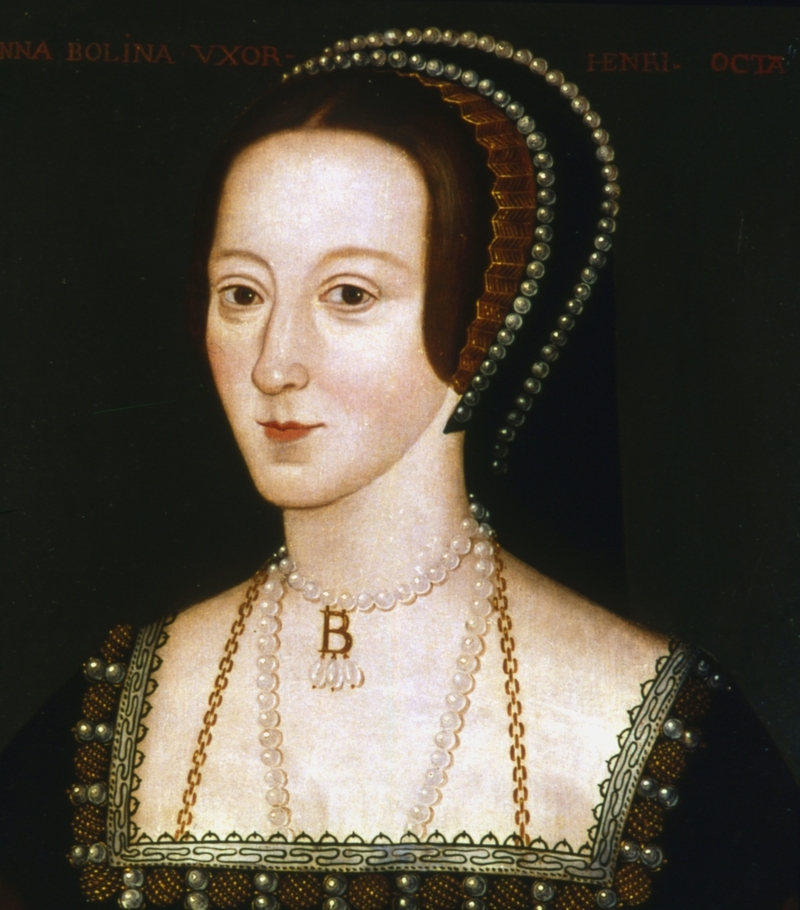
Unfortunately, a series of events (including the King's adulterous actions and the couple's failure to produce a male heir) led to tensions in the royal marriage. So much so that the King had Anne convicted and executed for the crime of treason, among others. Even worse, to this day there is still no credible evidence to support her conviction. Certainly not a fairytale ending for this Queen.
Bad Luck Boleyn
Anne Boleyn's tumultuous life still piques our interest until this very day. There have been many attempts to bring Anne Boleyn's story to life. These include several mini-series, namely "The Tudors" (2007), "Anne Boleyn"(2021), and the film "The Other Boleyn Girl" (2008) which starred Natalie Portman as Anne.
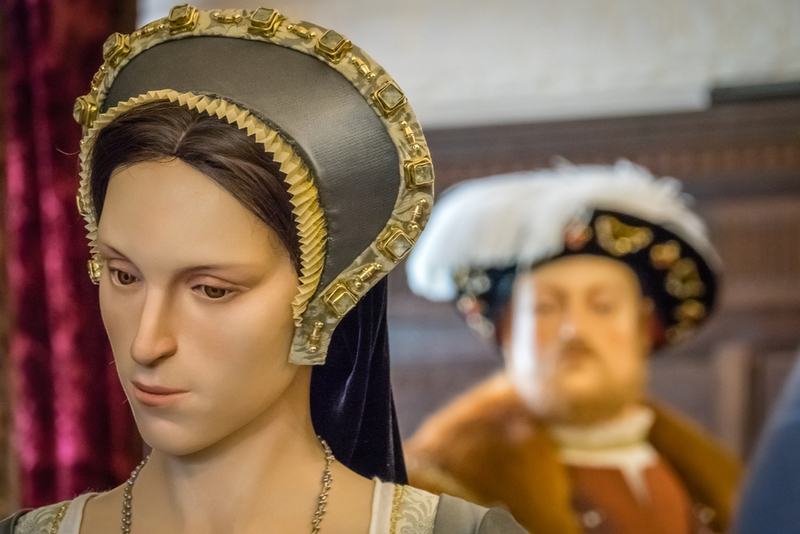
However, we have to say that none of the depictions have come even close to Nathan Shipley's (Director of Creative Tech of GS&PCGI) CGI facial replica of what Anne Boleyn may have actually looked like. With deep brown eyes like hers, it's no wonder she became the apple of King Henry's eye!
Rembrandt
Like Van Gough, Rembrandt was an iconic artist who perfected his skill, partly through self-portraits. However, unlike Van Gough, Rembrandt's work was adored while he was alive. The piece we see here was one of many portraits that Rembrandt produced of himself.
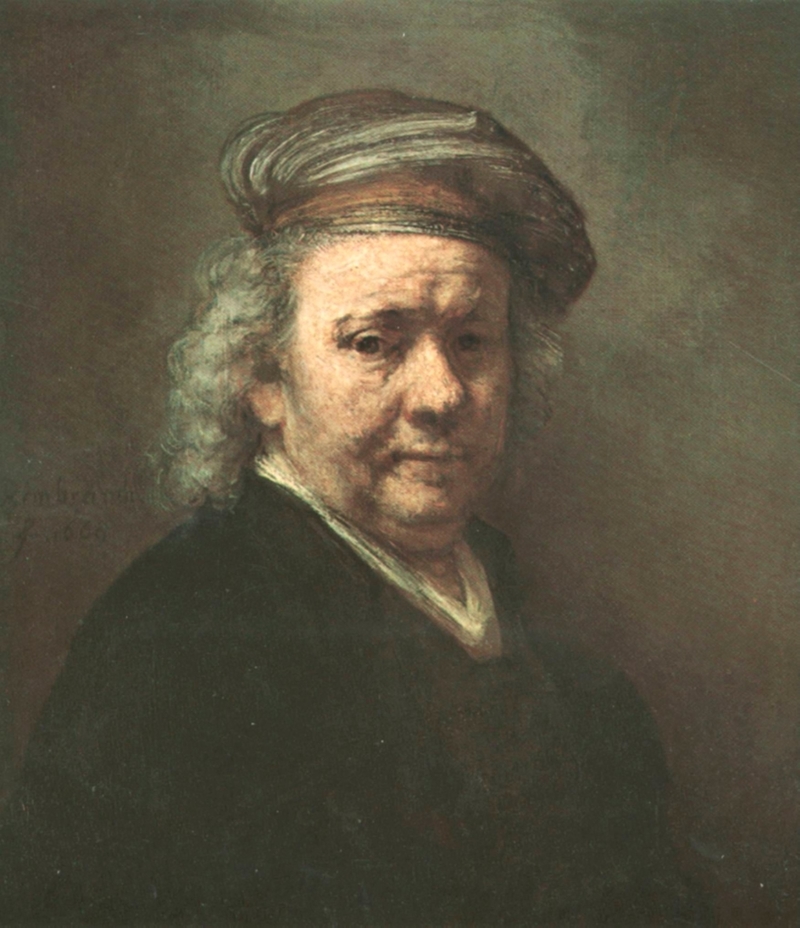
Rembrandt's unparalleled aptitude for etchwork, printmaking, and painting set the stage for him to be regarded as a pillar of the Dutch Golden Age. While his work was met with critical acclaim and made him incredibly wealthy, his personal life was less fortuitous. He sadly outlived most of his children and suffered a great deal of financial strain in his later years.
From Etch to Eerily Accurate
It is truly remarkable to witness how a few humble etchings could evolve into a breathtakingly lifelike wax figure visage. This transformation would have undoubtedly surprised not only us but also the legendary artist himself, Rembrandt. Every aspect of this recreation is a visual delight.
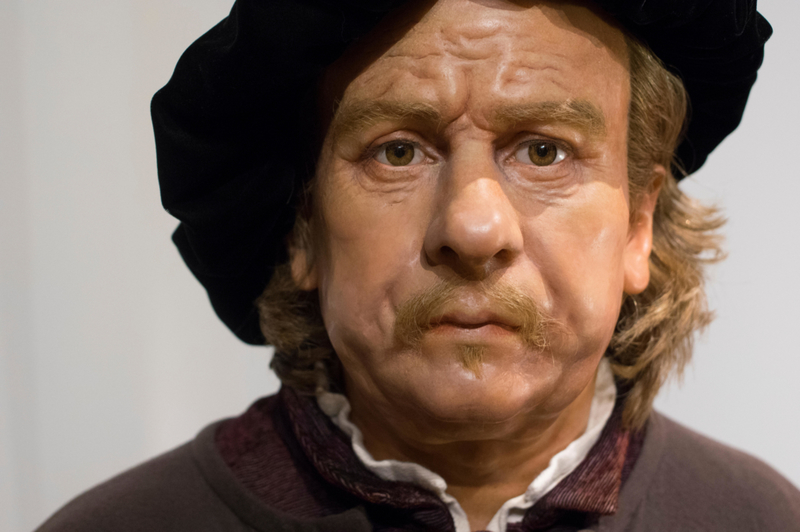
From the intricately detailed wisps of his hair seemingly caught in a gentle breeze to the penetrating intensity of his artistic gaze, which seems to fix upon our very faces. Curiosity lingers as we ponder what Rembrandt's critique might be of this interpretation of one of his renowned self-portraits. Would he be struck by its fidelity or offer nuanced insights into capturing the depths of his soul?
Mona Lisa
There's an undeniable likelihood that you've had the privilege of beholding this legendary masterpiece, or perhaps it is more accurate to say that Mona Lisa herself has graced you with her penetrating gaze. Leonardo da Vinci's iconic artwork has become an enduring symbol of the exquisite beauty and artistic genius of the Italian Renaissance era.
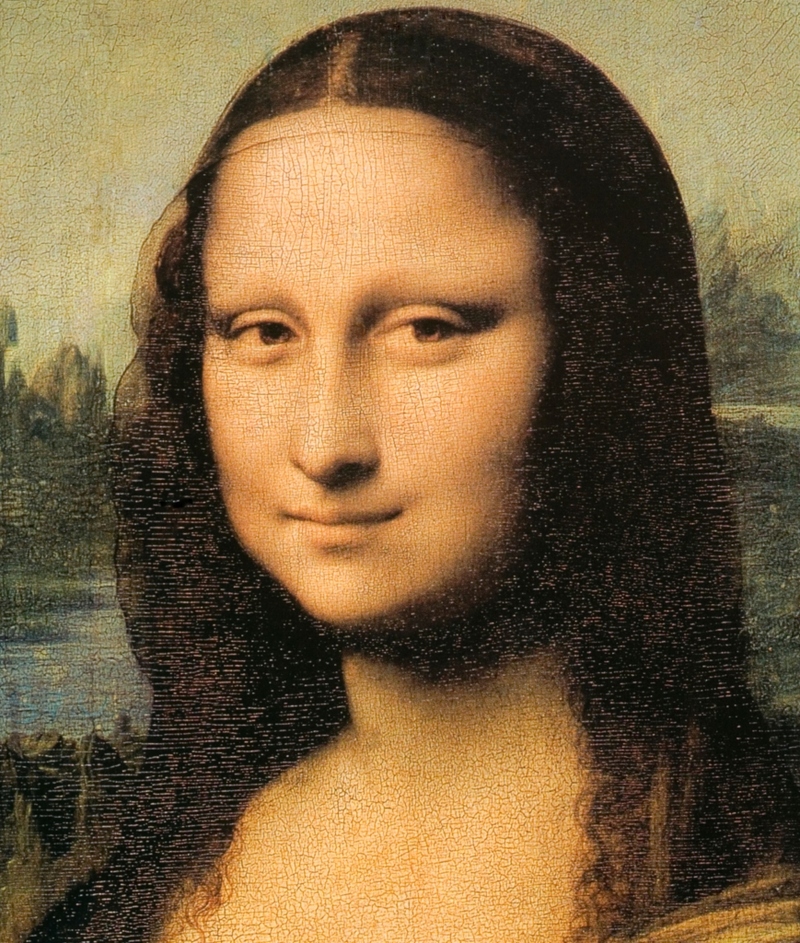
Though some may perceive the portrait as deceptively simple, the enigmatic smile of Mona Lisa has undeniably entranced audiences from all corners of the globe for countless generations. As the most universally recognized painting in existence, its value is estimated at a staggering $850 million.
That Mysterious Smile
Given the clouds of conspiracy that surround Leonardo's muse, we think "the Mysterious Mona Lisa" is a fitting nickname for her. The theories range from intriguing to ridiculous. One suggests that the woman in the painting didn't actually exist. Instead, it posits that she is a female depiction of Leonardo Davinci himself.
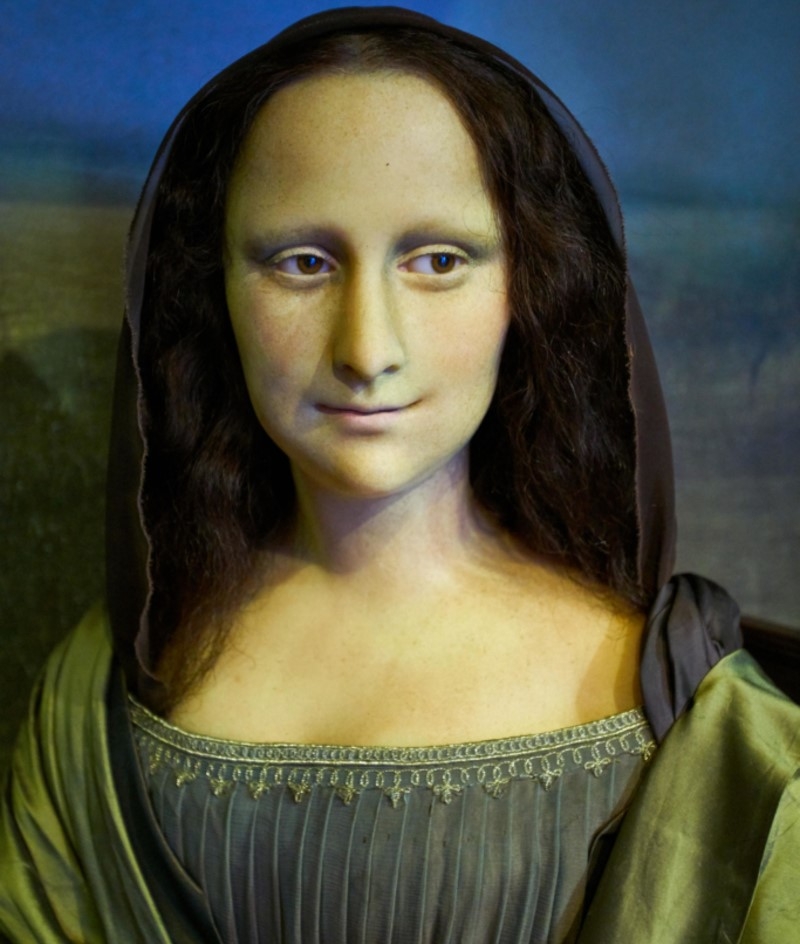
Some people even believe that they've spotted hidden numbers and letters in the artwork! Conspiracy theories aside, this incredibly realistic wax figure of Mona Lisa's face certainly makes it more convincing that she was indeed real. Perhaps some people have read "The Davinci Code" one too many times.
Benjamin Franklin
Beyond his familiar countenance on the $100 bill, Benjamin Franklin's legacy extends far and wide, encompassing a multifaceted and illustrious career. Not only did he play a pivotal role as a Founding Father in shaping the American Declaration of Independence, but Franklin also distinguished himself as a prolific political philosopher, inventor, and writer.

What truly amplifies the awe surrounding his accomplishments is the fact that the majority of his vast knowledge was self-acquired. Remarkably, Franklin only received two years of formal education, making his self-taught expertise all the more remarkable. His insatiable curiosity and unwavering dedication to learning have solidified him as a beacon of intellectual prowess.
To Be Frank-Lin
It's hard to deny that this waxwork portrayal of the esteemed Founding Father lends him a slightly more approachable aura, despite his countless achievements. Is that a subtle, wry smile we detect? We certainly hope so! Benjamin Franklin's remarkable contributions to society were undeniably weighty, leaving him with a multitude of responsibilities.
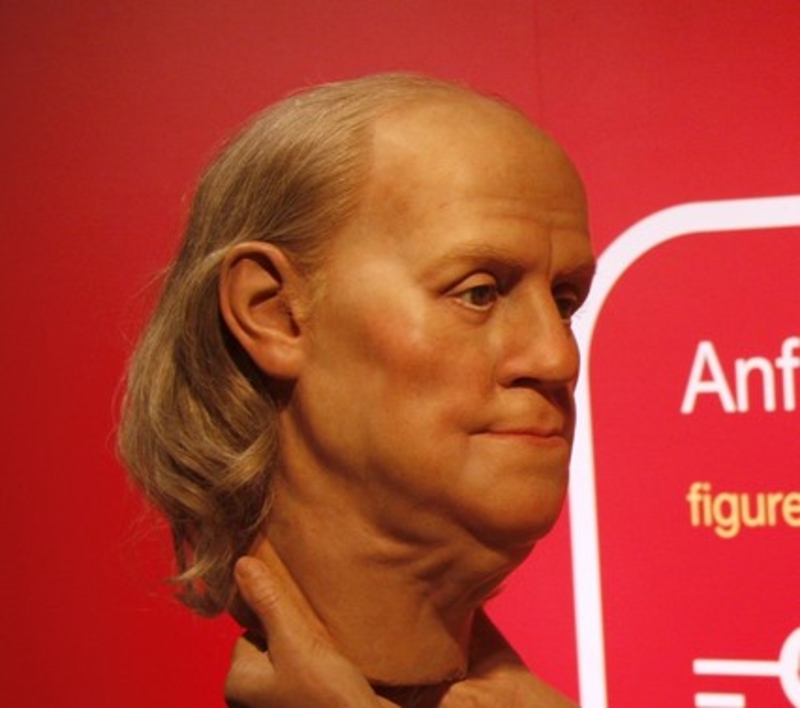
However, amidst his many endeavors, he also recognized the importance of leisure and revelry. This rendition of Benjamin Franklin at Madame Tussauds embodies that spirit of lightheartedness and fun, offering a glimpse into the moments when he could let loose and enjoy himself. Even great minds deserve to indulge in moments of playfulness, if only captured in waxwork form.
Ludwig Van Beethoven
A composer for the ages, Ludwig Van Beethoven is cemented in sonic history as one of the greatest musical minds of all time. Beethoven's love and talent for music were clear from a young age. By his early 20s, he was under the tutelage of the admired Austrian composer, Haydn.
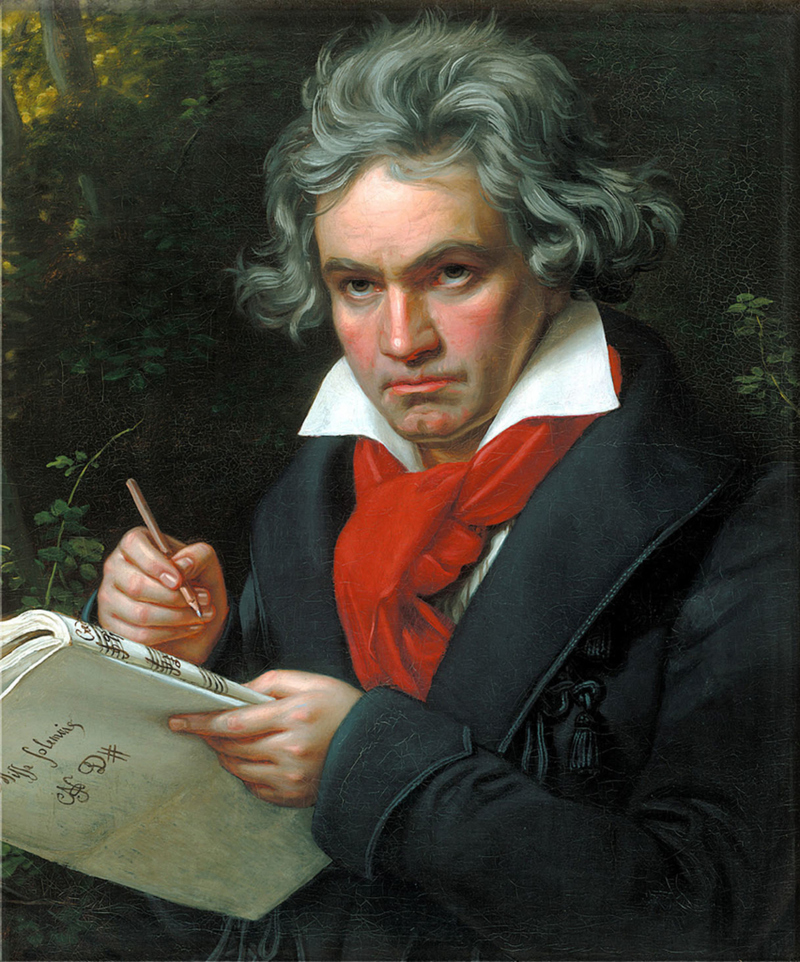
In an ironic twist of fate, Beethoven began to lose his hearing, eventually going deaf in 1814. This meant he was unable to partake in the pleasure of listening to his own works of art like the rest of his fans. And yet, he also found innovative ways to make music moving forward.
Beats by Beethoven
This striking wax figure representation of Beethoven imparts a touch of warmth to the renowned composer's typically stern countenance, albeit ever so subtly. While his demeanor may have appeared offputting to some, there is no denying the immense power and beauty of his musical opus, which remains an irresistible force for any discerning music critic.
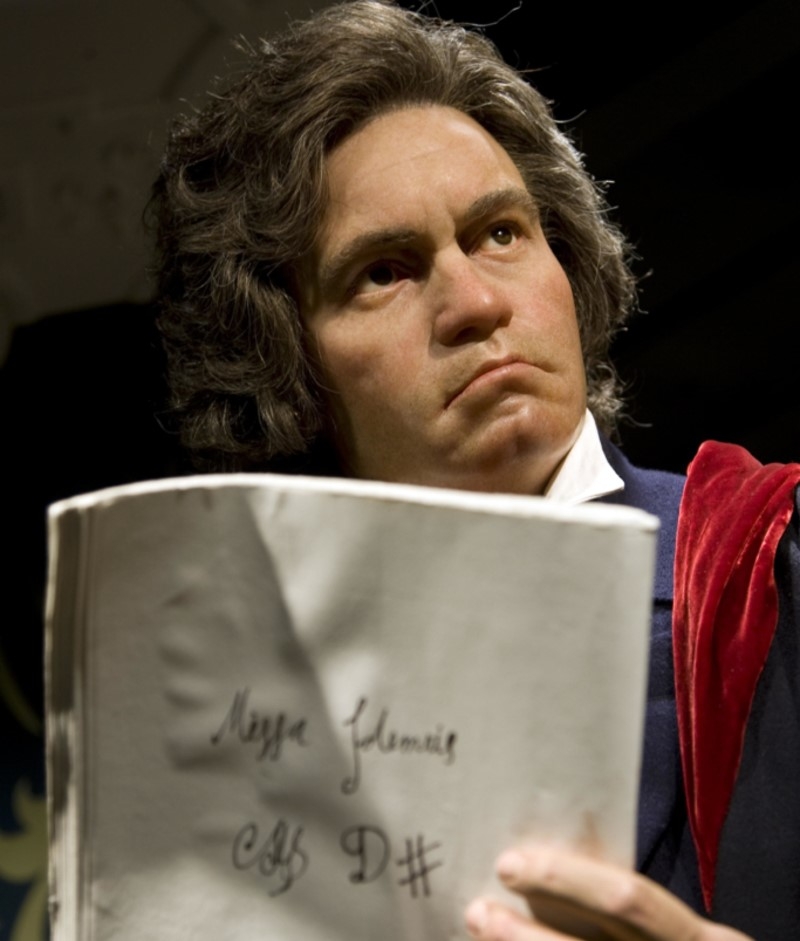
Beethoven's portfolio boasts an array of timeless masterpieces, including the majestic Symphony No.9, the evocative Piano Concerto No.4, and the inspiring opera Fidelio. Perhaps, if we possessed even a fraction of Beethoven's extraordinary talent, we would be reassured in our own abilities and embrace the power of our creations without feeling the need to impress others with a mere smile.
Vlad the Impaler
Vlad the Impaler, also known as the Prince of Wallachia, emerged as the second-born son of the renowned Dracul family, in what is now part of modern-day Romania. Through years marked by gruesome conflicts and military conquests, he eventually rose to power, assuming control over the region.
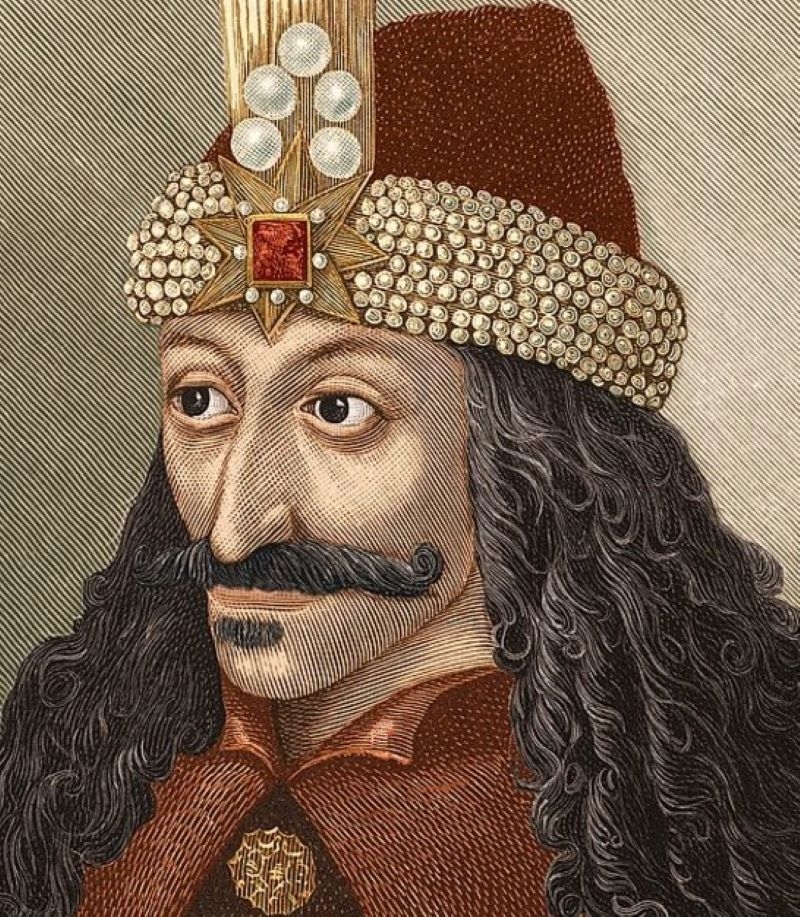
Interestingly, the infamous vampire character, Count Dracula, crafted by author Bram Stoker, found inspiration in Vlad's family name and notorious disposition. The eerie connection between Vlad's legacy and the creation of this iconic fictional figure further amplifies the enigmatic allure surrounding the Prince of Wallachia, forever intertwining his name with tales of darkness and macabre legends.
Vicious Vlad
Without a doubt, Vlad fully earned his chilling moniker through his gruesome deeds. How, you may ask? By resorting to stomach-churning practices such as disemboweling and impaling his unfortunate victims upon sharp wooden stakes—an utterly gruesome and horrifying fate. To be fair, this does sound like the kind of thing that Count Dracula would take pleasure in doing.
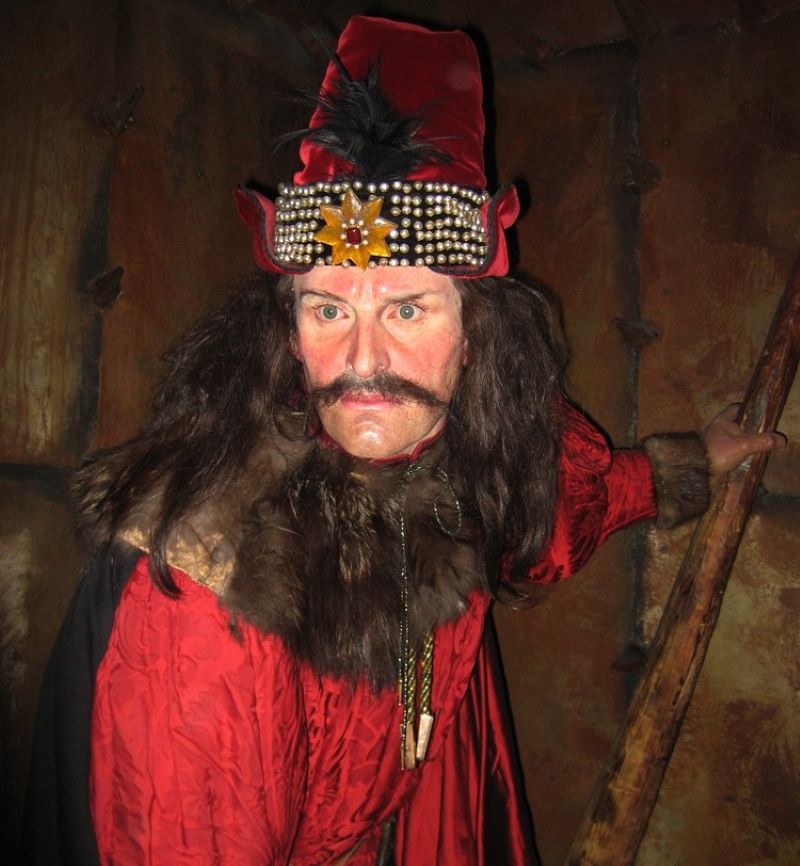
The unnerving wax figure portrayal of Vlad, with its reddened countenance, undeniably sends shivers down our spines. The meticulous attention to detail, including the depiction of the menacing wooden stake he clutches, adds to the unsettling atmosphere. It serves as a haunting reminder of the terrifying reign of this historical figure.